The Sadler 34 is a 34.75ft masthead sloop designed by David & Martin Sadler and built in fiberglass by Sadler Yachts between 1983 and 1995.
260 units have been built..
The Sadler 34 is a moderate weight sailboat which is slightly under powered. It is stable / stiff and has a good righting capability if capsized. It is best suited as a coastal cruiser. The fuel capacity is originally small. There is a short water supply range.
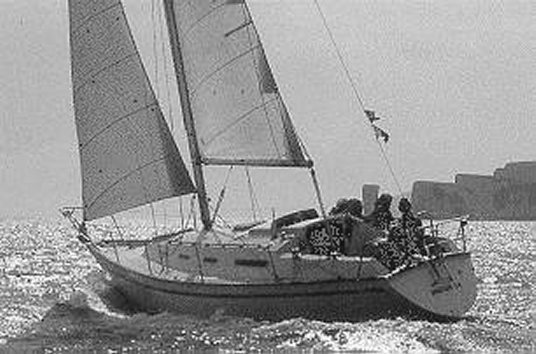

Sadler 34 for sale elsewhere on the web:

Main features
| Model | Sadler 34 | ||
| Length | 34.75 ft | ||
| Beam | 10.75 ft | ||
| Draft | 5.83 ft | ||
| Country | United Kingdom (Europe) | ||
| Estimated price | $ 0 | ?? |
Login or register to personnalize this screen.
You will be able to pin external links of your choice.

See how Sailboatlab works in video
| Sail area / displ. | 14.55 | ||
| Ballast / displ. | 39.06 % | ||
| Displ. / length | 265.11 | ||
| Comfort ratio | 27.97 | ||
| Capsize | 1.84 |
| Hull type | Monohull fin keel with rudder on skeg | ||
| Construction | Fiberglass | ||
| Waterline length | 27.83 ft | ||
| Maximum draft | 5.83 ft | ||
| Displacement | 12800 lbs | ||
| Ballast | 5000 lbs | ||
| Hull speed | 7.07 knots |

We help you build your own hydraulic steering system - Lecomble & Schmitt
| Rigging | Masthead Sloop | ||
| Sail area (100%) | 496 sq.ft | ||
| Air draft | 0 ft | ?? | |
| Sail area fore | 278.05 sq.ft | ||
| Sail area main | 218.37 sq.ft | ||
| I | 42.81 ft | ||
| J | 12.99 ft | ||
| P | 36.98 ft | ||
| E | 11.81 ft |
| Nb engines | 1 | ||
| Total power | 0 HP | ||
| Fuel capacity | 25 gals |
Accommodations
| Water capacity | 45 gals | ||
| Headroom | 0 ft | ||
| Nb of cabins | 0 | ||
| Nb of berths | 0 | ||
| Nb heads | 0 |
Builder data
| Builder | Sadler Yachts | ||
| Designer | David & Martin Sadler | ||
| First built | 1983 | ||
| Last built | 1995 | ||
| Number built | 260 |
Other photos
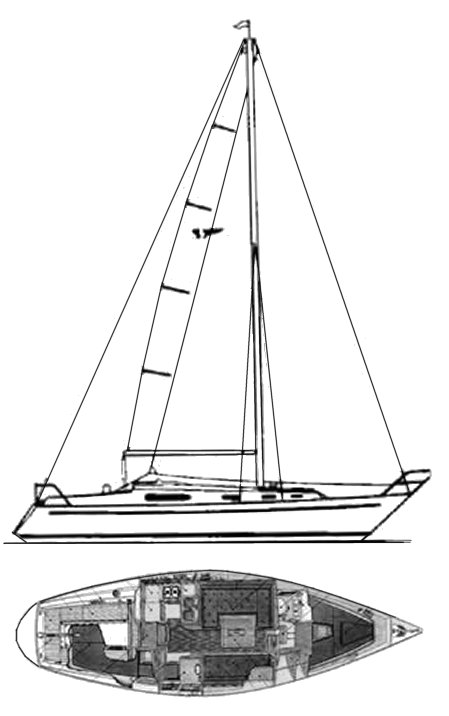
Modal Title
The content of your modal.
Personalize your sailboat data sheet
- Types of Sailboats
- Parts of a Sailboat
- Cruising Boats
- Small Sailboats
- Design Basics
- Sailboats under 30'
- Sailboats 30'-35
- Sailboats 35'-40'
- Sailboats 40'-45'
- Sailboats 45'-50'
- Sailboats 50'-55'
- Sailboats over 55'
- Masts & Spars
- Knots, Bends & Hitches
- The 12v Energy Equation
- Electronics & Instrumentation
- Build Your Own Boat
- Buying a Used Boat
- Choosing Accessories
- Living on a Boat
- Cruising Offshore
- Sailing in the Caribbean
- Anchoring Skills
- Sailing Authors & Their Writings
- Mary's Journal
- Nautical Terms
- Cruising Sailboats for Sale
- List your Boat for Sale Here!
- Used Sailing Equipment for Sale
- Sell Your Unwanted Gear
- Sailing eBooks: Download them here!
- Your Sailboats
- Your Sailing Stories
- Your Fishing Stories
- Advertising
- What's New?
- Chartering a Sailboat
- Cruising Yachts 30' to 35'
The Sadler 34 Sailboat
The Sadler 34, a masthead sloop, was designed by David & Martin Sadler and built in the UK by Sadler Yachts Ltd.
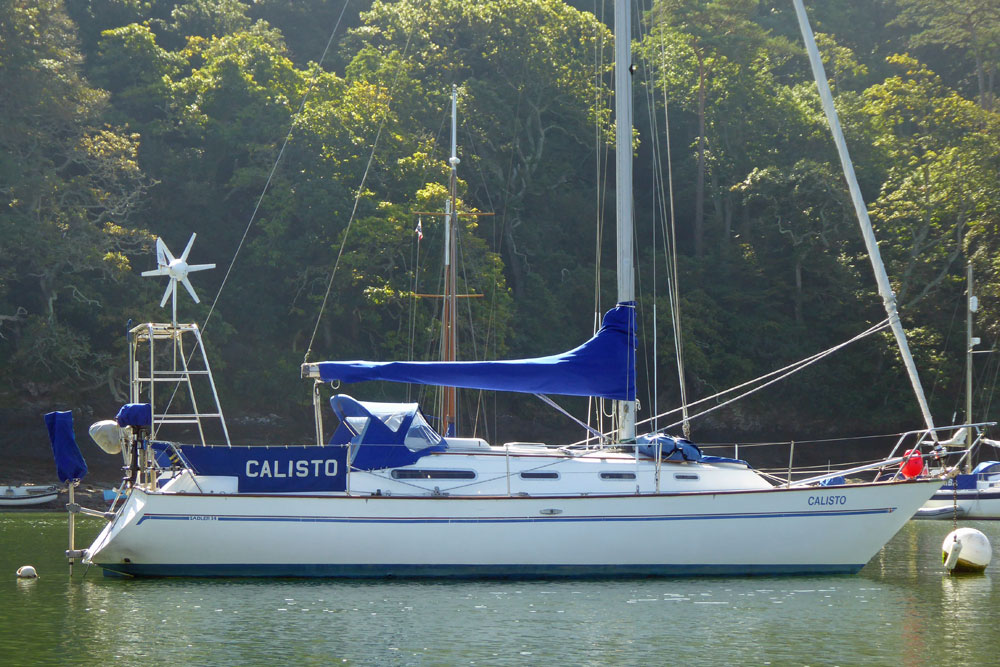
Published Specification for the Sadler 34
Underwater Profile: Fin with Skeg-hung Rudder
Hull Material : GRP (Fibreglass)
Length Overall : 34'9" (10.6m)
Waterline Length : 27'10" (8.5m)
Beam : 10'9" (3.3m)
Draft : 5'10" (1.8m)
Rig Type : Masthead sloop
Displacement : 12,800lb (5,806kg)
Designer : David & Martin Sadler
Builder : Sadler Yachts (UK)
Year First Built : 1983
Year Last Built : 1995
Number Built : 260
Published Design Ratios for the Sadler 34
1. Sail Area/Displacement Ratio: 14.6
2. Ballast/Displacement Ratio: 39.1
3. Displacement/Length Ratio: 265
4. Comfort Ratio: 28.0
5. Capsize Screening Formula: 1.8
read more about these all-revealing numbers...
Summary Analysis of the Design Ratios for the Sadler 34

1. A Sail Area/Displacement Ratio of just 14.6 suggests that the Sadler 34 will need a stiff breeze to get her going. In light conditions, unless you've got plenty of time on your hands, motor-sailing may be the way to go.
2. A Ballast/Displacement Ratio of 39.1 means that unless the bulk of the ballast is concentrated in a bulb at the foot of her keel, the Sadler 34 will have a tendency to heel excessively in a gust, and she'll need to be reefed early to keep her sailing upright in a moderate breeze.
3. A Displacement/Length Ratio of 265, tells us the Sadler 34 is a moderate displacement cruiser, which means she'll carry all your cruising gear without it having a dramatic effect on her performance. Most of today's sailboats intended for offshore cruising fall into this displacement category.
4. Ted Brewer's Comfort Ratio of 28.0 suggests that crew comfort of a Sadler 34 in a seaway is similar to what you would associate with the motion of a coastal cruiser with moderate stability, which is not encouraging news for anyone prone to seasickness.
5. The Capsize Screening Formula (CSF) of 1.8 tells us that a Sadler 34 would be a safer choice of sailboat for an ocean passage than one with a CSF of more than 2.0.
Any Questions?
What is the history of Sadler Yachts?
The history of Sadler Yachts is a story of a father-and-son team who created some of the most popular and seaworthy sailboats in the UK. Here is a brief summary of their achievements:
- David Sadler was a civil servant and a self-taught yacht designer who started his career in 1969 by designing and building the Contessa 26 and the Contessa 32 with Jeremy Rogers in Lymington. These boats were based on the successful Folkboat design and became classics in their own right, winning many offshore races and cruising awards;
- Martin Sadler was David's son who completed a yacht building course at Southampton College in 1972 and worked for Jeremy Rogers as well. He wanted to start his own boatbuilding business and invited his father to join him as a non-executive director;
- Sadler Yachts Limited was incorporated in January 1973 and launched their first boat, the Sadler 25, in 1974. This boat was designed by David Sadler and was a fast and robust club racer and family cruiser that sold over 300 units until 1981;
- In 1979, Sadler Yachts introduced the Sadler 32, another design by David Sadler that improved on the Contessa 32 with more accommodation, stiffness, and rating. The Sadler 32 was an elegant and seaworthy cruiser/racer that received great acclaim from the yachting press and customers. Over 300 units were built until 1989;
- In 1981, Sadler Yachts launched the Sadler 29 and the Sadler 26, two boats that featured Martin Sadler's innovative idea of unsinkability. These boats had a sandwich construction with rigid polyurethane foam injected between the inner and outer hulls, making them virtually unsinkable even if holed. The Sadler 29 and 26 were also spacious and comfortable family cruisers that sold well in the UK and abroad;
- In 1984, Sadler Yachts moved to a larger premises in Poole and expanded their range with the Sadler Starlight 35 and the Sadler Starlight 39, two performance cruisers designed by Stephen Jones. These boats had a more modern look and feel than the previous Sadlers, with sleek lines, sugar scoop transoms, wing keels, and fractional rigs.
- In 1989, Martin Sadler designed the Sadler SE, a modified version of the Sadler 34 that had a more contemporary interior layout, a sugar scoop transom, and a taller rig. This boat was intended to compete with newer designs in the market, but only a few were built before Sadler Yachts ceased trading in 2008 due to financial difficulties;
- After Sadler Yachts went out of business, some of their moulds were bought by other boatbuilders who continued to produce new or refurbished Sadlers for special orders. Some parts and services for Sadler boats are still available from other sources.
What other versions of the Sadler 34 were built?
There were two versions of the Sadler 34 built: the original version designed by David Sadler, and the SE version designed by Martin Sadler. The SE version had a more modern interior layout, a sugar scoop transom, and a taller rig.
What is the accommodation like in the Sadler 34?
The accommodation in the Sadler 34 is spacious and comfortable for a boat of its size. It has a double berth in the forepeak, a U-shaped dinette that converts to a double berth in the saloon, a quarter berth aft, and a separate heads compartment with a shower. The galley is well-equipped with a two-burner stove, an oven, a fridge, and a sink. The chart table is large and has plenty of storage space.
What keel options are available for the Sadler 34?
The Sadler 34 has four keel options: a deep fin keel, a shallow fin keel, a bilge keel, and a lifting keel. The deep fin keel has a draft of 1.83 m and a ballast ratio of 43%. The shallow fin keel has a draft of 1.37 m and a ballast ratio of 46%. The bilge keel has a draft of 1.22 m and a ballast ratio of 48%. The lifting keel has a draft of 0.76 m when raised and 1.68 m when lowered, and a ballast ratio of 45%.
What is the Sadler 34 like to sail?
The Sadler 34 is a fast and seaworthy sailing yacht that can handle various weather conditions. It has a balanced helm, good directional stability, and easy handling. It performs well upwind and downwind, and can reach speeds of up to 7 knots in moderate winds. It is also very stiff and stable, thanks to its sandwich construction and high ballast ratio.
What is the average cost of a secondhand Sadler 34?
The average cost of a secondhand Sadler 34 depends on the year, condition, equipment, and location of the boat. According to YachtWorld, the price range for Sadler 34 boats for sale as of December 2021 is between £29,950 and £32,330.
Is this boatbuilder still in business?
No, this boatbuilder is no longer in business. Sadler Yachts ceased trading in 2008 due to financial difficulties. However, some parts and services for Sadler boats are still available from other sources.
What other sailboats have been created by these yacht designers?
David Sadler was the designer of several popular sailboats, such as the Contessa 26, Contessa 32, Contessa 35, Sadler Starlight 35, Sadler Starlight 39, and others. Martin Sadler was his son and collaborator who designed the SE version of the Sadler 34 as well as the Sadler Barracuda.
The above answers were drafted by sailboat-cruising.com using GPT-4 (OpenAI’s large-scale language-generation model) as a research assistant to develop source material; to the best of our knowledge, we believe them to be accurate.
Other sailboats in the Sadler range include:
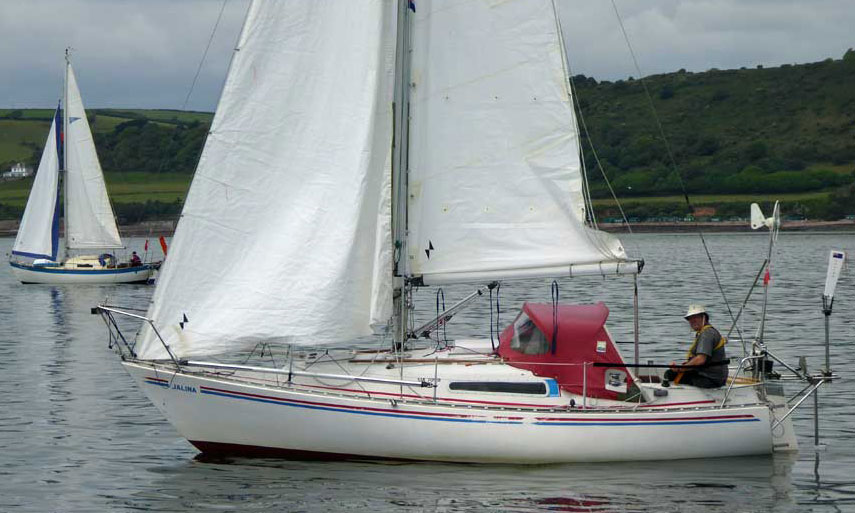
Recent Articles
Contessa 26 Sailboat Specs & Key Performance Indicators
Sep 25, 24 02:46 PM
The CSY 44 Mid-Cockpit Sailboat
Sep 15, 24 08:18 AM
Hallberg-Rassy 41 Specs & Key Performance Indicators
Sep 14, 24 03:41 AM
Here's where to:
- Find Used Sailboats for Sale...
- Find Used Sailing Gear for Sale...
- List your Sailboat for Sale...
- List your Used Sailing Gear...
Our eBooks...

A few of our Most Popular Pages...

Copyright © 2024 Dick McClary Sailboat-Cruising.com
Review of Sadler 34
Basic specs..
The hull is made of fibreglass. Generally, a hull made of fibreglass requires only a minimum of maintenance during the sailing season.
The boat is equipped with 5-8 berths.
The Sadler 34 is equipped with a long keel. A full keel provide a better directional stability than a similar boat with a fin keel; on the other hand, better directional stability means also that the boat is more difficult to handle in a harbour with less space.
The boat can enter most marinas as the draft is just about 1.78 - 1.88 meter (5.84 - 6.14 ft) dependent on the load. See immersion rate below.
Sadler 34 is typically equipped with an inboard Volvo Penta 2008 diesel engine
Sailing characteristics
This section covers widely used rules of thumb to describe the sailing characteristics. Please note that even though the calculations are correct, the interpretation of the results might not be valid for extreme boats.
What is Capsize Screening Formula (CSF)?
The capsize screening value for Sadler 34 is 1.85, indicating that this boat could - if evaluated by this formula alone - be accepted to participate in ocean races.
The immersion rate is defined as the weight required to sink the boat a certain level. The immersion rate for Sadler 34 is about 234 kg/cm, alternatively 1310 lbs/inch. Meaning: if you load 234 kg cargo on the boat then it will sink 1 cm. Alternatively, if you load 1310 lbs cargo on the boat it will sink 1 inch.
Sailing statistics
This section is statistical comparison with similar boats of the same category. The basis of the following statistical computations is our unique database with more than 26,000 different boat types and 350,000 data points.
What is L/B (Length Beam Ratio)?
What is a Ballast Ratio?
SA/D (Sail Area Displacement ratio) Indicates how fast the boat is in light wind: - Cruising Boats have ratios 10-15 - Cruiser-Racers have ratios 16-20 - Racers have ratios above 20 - High-Performance Racers have ratios above 24 Sail-area/displacement ratio (SA/D ratio): 19.21
Maintenance
If you need to renew parts of your running rig and is not quite sure of the dimensions, you may find the estimates computed below useful.
| Usage | Length | Diameter | ||
| Jib sheet | 10.6 m | (34.8 feet) | 14 mm | (0.55 inch) |
| Genoa sheet | 10.6 m | (34.8 feet) | 14 mm | (0.55 inch) |
| Mainsheet | 26.5 m | (87.1 feet) | 14 mm | (0.55 inch) |
| Spinnaker sheet | 23.4 m | (76.7 feet) | 14 mm | (0.55 inch) |
This section is reserved boat owner's modifications, improvements, etc. Here you might find (or contribute with) inspiration for your boat.
Do you have changes/improvements you would like to share? Upload a photo and describe what you have done.
We are always looking for new photos. If you can contribute with photos for Sadler 34 it would be a great help.
If you have any comments to the review, improvement suggestions, or the like, feel free to contact us . Criticism helps us to improve.
Great choice! Your favorites are temporarily saved for this session. Sign in to save them permanently, access them on any device, and receive relevant alerts.
- Sailboat Guide
Sadler 34 is a 34 ′ 8 ″ / 10.6 m monohull sailboat designed by David Sadler and built by Sadler Yachts between 1983 and 1995.

- 2 / 11 New York, NY, US 1984 Sadler 34 $19,900 USD View
- 3 / 11 New York, NY, US 1984 Sadler 34 $19,900 USD View
- 4 / 11 New York, NY, US 1984 Sadler 34 $19,900 USD View
- 5 / 11 New York, NY, US 1984 Sadler 34 $19,900 USD View
- 6 / 11 New York, NY, US 1984 Sadler 34 $19,900 USD View
- 7 / 11 New York, NY, US 1984 Sadler 34 $19,900 USD View
- 8 / 11 New York, NY, US 1984 Sadler 34 $19,900 USD View
- 9 / 11 New York, NY, US 1984 Sadler 34 $19,900 USD View
- 10 / 11 New York, NY, US 1984 Sadler 34 $19,900 USD View
- 11 / 11 New York, NY, US 1984 Sadler 34 $19,900 USD View

Rig and Sails
Auxilary power, accomodations, calculations.
The theoretical maximum speed that a displacement hull can move efficiently through the water is determined by it's waterline length and displacement. It may be unable to reach this speed if the boat is underpowered or heavily loaded, though it may exceed this speed given enough power. Read more.
Classic hull speed formula:
Hull Speed = 1.34 x √LWL
Max Speed/Length ratio = 8.26 ÷ Displacement/Length ratio .311 Hull Speed = Max Speed/Length ratio x √LWL
Sail Area / Displacement Ratio
A measure of the power of the sails relative to the weight of the boat. The higher the number, the higher the performance, but the harder the boat will be to handle. This ratio is a "non-dimensional" value that facilitates comparisons between boats of different types and sizes. Read more.
SA/D = SA ÷ (D ÷ 64) 2/3
- SA : Sail area in square feet, derived by adding the mainsail area to 100% of the foretriangle area (the lateral area above the deck between the mast and the forestay).
- D : Displacement in pounds.
Ballast / Displacement Ratio
A measure of the stability of a boat's hull that suggests how well a monohull will stand up to its sails. The ballast displacement ratio indicates how much of the weight of a boat is placed for maximum stability against capsizing and is an indicator of stiffness and resistance to capsize.
Ballast / Displacement * 100
Displacement / Length Ratio
A measure of the weight of the boat relative to it's length at the waterline. The higher a boat’s D/L ratio, the more easily it will carry a load and the more comfortable its motion will be. The lower a boat's ratio is, the less power it takes to drive the boat to its nominal hull speed or beyond. Read more.
D/L = (D ÷ 2240) ÷ (0.01 x LWL)³
- D: Displacement of the boat in pounds.
- LWL: Waterline length in feet
Comfort Ratio
This ratio assess how quickly and abruptly a boat’s hull reacts to waves in a significant seaway, these being the elements of a boat’s motion most likely to cause seasickness. Read more.
Comfort ratio = D ÷ (.65 x (.7 LWL + .3 LOA) x Beam 1.33 )
- D: Displacement of the boat in pounds
- LOA: Length overall in feet
- Beam: Width of boat at the widest point in feet
Capsize Screening Formula
This formula attempts to indicate whether a given boat might be too wide and light to readily right itself after being overturned in extreme conditions. Read more.
CSV = Beam ÷ ³√(D / 64)
Embed this page on your own website by copying and pasting this code.

- About Sailboat Guide
©2024 Sea Time Tech, LLC
This site is protected by reCAPTCHA and the Google Privacy Policy and Terms of Service apply.

- Dinghy Database
- Dinghy Sailing For Beginners
- Introduction To Sailing Dinghies
- Sailing Dinghy Types
- Buying A Sailing Dinghy
- Sailing Dinghy Racing
- Dinghy Sailing Courses
- Dinghy Sailing Clothing
- Sail Materials
- Righting a Capsized Sailing Dinghy
- Trailer Sailer Database
- Advantages/Disadvantages
- Buying A Trailer Sailer
- Towing your boat
- Yacht Database
- Yacht Charter / Holidays
- Choosing a SUP
- Inflatable SUP Construction
- RC Yacht Classes
- Add Listing
Sadler 34 Yacht / Sailboat
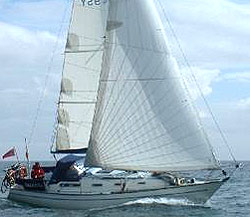
The Sadler 34 yacht has ancestry which can be traced directly back to the Contessa 32, also designed by Martin Sadler. The Sadler 34 is the largest of the Sadlers and has all the qualities of a true classic offshore yacht.
Her sleek, purposeful profile, moderate beam, generous displacement and undistorted hull lines all point towards a powerful cruising yacht, one whose design is based on what the sea demands, rather than what fashion dictates.
Referred to as timeless, comfortable, elegant and remarkable in performance and dependability the Sadler 34 is popular with families and has the ability to go further than the next marina.
The Sadler 34 has been used for a number of significant offshore passages:
1986 David Katz a uses Sadler 34 to retrace Columbus’ steps from Spain to the Caribbean.
1989 Tom de Ruiter returns from a four year 35,000 mile single-handed circumnavigation in a Sadler 34
1988 Several Sadler 34s entered in the Two-handed Transatlantic Race. Positive feedback made towards basic structural integrity and strength of the hull and deck.
The Sadler 34 has changed little over the years. However, the new deep and shallow fin keels, designed by Stephen Jones have improved hydrodynamics and lower centre of gravity these have added even more power and performance.
- Specification
- Related Links
Length : 10.6m Beam : 3.3m Weight : 5,800kg Sail Area : 660 sq ft
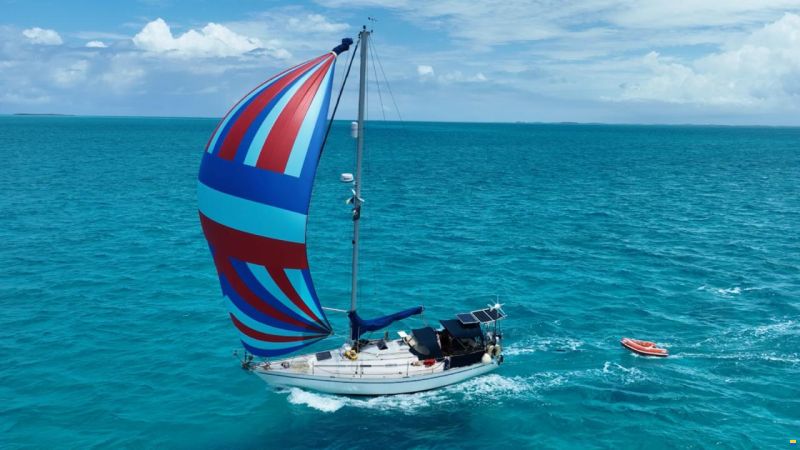
Performance
Accomodation.
Report error
Tell us what's wrong
We do our best to fix any errors in boatpedia. thanks for the help.

Call Mike on 07717 885435

- Sadler 34 Yacht
Largest of the Sadlers, the 34, designed by Martin Sadler, has evolved from illustrious predecessors. Her ancestry can be traced directly back to the Contessa 32, (designed by David Sadler) and she embodies all the qualities of the true classic offshore yacht.
Her sleek, purposeful profile, moderate beam, generous displacement and undistorted hull lines all point towards a powerful cruising yacht, one whose design is based on what the sea demands, rather than what fashion dictates.
The timeless elegance of her looks, her remarkable performance and her complete dependability has been the key to the enduring appeal of the Sadler 34. Easy, predictable handling and comfortable motion have made the Sadler 34 a firm favourite among family crews looking for a cruising yacht with that added sparkle and the ability to go further than the next marina.
These same qualities have also lead to her being used for a quite remarkable number of offshore passages. David Katz chose a Sadler 34 to retrace Columbus’ steps from Spain to the Caribbean in 1986, while in 1989 Tom de Ruiter returned from a four year 35,000 mile single-handed circumnavigation in a Sadler 34 modified only by the addition of a wind vane and some solar panels. There were several 34s entered in the tough 1988 Two-handed Transatlantic race, where one owner commented – “As the race progressed, so our confidence in the boat increased, as it did in her ability to continue making good ground to weather in a full gale. . . never did I have any doubts about the basic structural integrity and strength of the hull and deck.”
In common with her smaller sisters, the 34 has changed remarkably little over the years. However, the new Stephen Jones designed deep and shallow fin keels, with their improved hydrodynamics and lower centre of gravity have added even more power and performance, and will help the Sadler 34 to keep setting the pace for many years to come.
“If she looks right, she is right”, is one of the oldest adages in the business. On the Sadler 34, you will notice the absence of trendy distortions like over-slim entry, over-fat waist, unsightly bulges and bustles, where excessive berthage has been crammed in.
Note instead the clean, uncluttered lines that clearly show her sea-kindliness and power, well faired-in keels (four keel options are available) and a properly supported rudder on a full-depth skeg, giving strength and directional stability.
Construction
Alastair Vallance of “Yachting Life” developed an ingenious test. “Our very first move was to go straight down to the starboard hanging locker. With a strong sun, would we see the usual x-ray of glassfibre through the gelcoat? Not a chance!” Sadler hulls are over an inch thick. They are made up of an inner and outer module with rigid cellular polyurethane forced in between under pressure. The outer module – the hull – is laid up to the same thickness as a single-skinned boat’s entire hull. The result is a “sandwich”, offering the kind of stiffness one normally associates with steel.
Why are they made like this? Firstly, it makes a Sadler unsinkable – a concept so new in production boats that at the time it left competitors in somewhat of a dilemma. Secondly, it provides standards of quietness, warmth and absence of condensation that are outstanding at any price. Thirdly, it provides a hull so stiff that it does not ask the mast and rigging loads to be shared by the dubious strengthening of interior bulkheads. Fourthly, it provides an interior moulding which is smooth, easy to clean and maintain, and contributes to the bright, open atmosphere below.
Start at the bow – by inspecting the massive stainless bow fitting with its twin rollers. Note the capacious anchor stowage, the deep moulded toerails with teak capping instead of the usual extruded alloy; the wide, uncluttered side decks; generous fairleads with midship cleats for springs; provision for jackstays to take your safety harness clip.
As you move aft to the cockpit, note the stainless anti-chafe strips in way of quarter rails, cleats and boarding ladder. Appreciate the well-sited halyard and sheet winches and cleats. In the cockpit, note the well-positioned, strong mainsheet track; the deep cockpit which you sit in, rather than on, with angled coamings providing both protection and comfortable backrests. Open the huge seat and stern lockers, whose lids are fitted with elastic restraining straps. Look for the ingenious handhole, which allows you to turn off the gas bottle without opening the locker lid. Note also, the safety-harness clip points. A deck layout designed for sailors by sailors.
Accommodation
Access to the cockpit from below is via a comfortably wide accommodation ladder consisting of two stout steps covered in Treadmaster and mounted on the removable front of the engine compartment.
The top step is formed by the top of the engine box and makes a useful extra worktop for the galley. The access itself is closed with a three-section, varnished teak washboard, the top section of which is fitted with a louvered vent.
The accommodation can be divided into three separate cabins. Right forward are two vee-berths which can be turned into a double with the usual infill piece. There is adequate standing headroom beneath the 500 x 500mm escape hatch, set in the coachroof.
Just abaft the forecabin is a comfortable head compartment to port and this is provided with pressurised hot and cold freshwater through a flexible shower head. The seacocks for the seawater and waste outlet of the head are easy to reach and service. A tannoy vent is set in the deckhead and there is a small mirror fitted to the aft bulkhead of the compartment.
There is plenty of open-fronted lockerage for the stowage of toiletries. A push button operated electric pump beside the basin takes care of the shower water discharge. To starboard of the head is generous hanging space, which can be closed by zipped covers, or by the part-louvered main bulkhead door. The door is to full accommodation height.
The main saloon consists of a c-shaped settee around a two-leaf cabin table. The centre section of the table forms a bottle stowage. On the starboard side of the passage through the saloon is a settee which doubles as a sea berth and is fitted with a lee cloth. A trotter box for this berth extends aft beneath the chart table to give a maximum sleeping length of 6 feet 7 inches (2 metres).
To port, the settee also converts to a double berth. With the settee backs removed, the sleeping length between the galley peninsular and the main bulkhead is 6 feet 2 inches (1.58 metres). There is stowage behind both settees and beneath the settee to port. The whole of the space beneath the starboard settee is taken up with a glassfibre 60 gallon (273 litre) water tank. Grabrails run the full length of the saloon along both sides, just beneath the deckhead. The headlining is textured, foam-backed vinyl with varnished teak battens running fore and aft to increase the apparent length of the accommodation.
Abaft of the main saloon to port and handy to the cockpit, is a well designed ‘U’ shaped galley. There is a gimballed two-burner Plastimo Atlantic stove and oven, which can be locked upright for harbour use. A cavernous ice-box is moulded into the after worktop of the galley and there is a side opening fridge beside the accommodation ladder.
The forward section of the galley consists of a peninsular fitted with two deep sinks. Both are fed by pressurised hot and cold water via a faucet on the end of a flexible hose. There is also a separate, hand-pumped fresh water supply to one of the sinks. Let into the remaining section of the forward peninsular, alongside the stove is a rubbish compartment, which is designed to take a domestic, flip-top waste bin. The plastic bin top can be removed and replaced with a flush-fit section of worktop. There is plenty of above-worktop stowage both behind the stove and along the back of the galley. Fiddled shelves are concealed behind dark-tinted acrylic sliding doors.
The navigator’s station to starboard at the foot of the accommodation access is well laid out with plenty of stowage for the tools of the pilot’s trade. The chart table will take a folded Admiralty chart and stowage for full folio folded charts is beneath the hinged top. This compartment also includes a partitioned section for pencils, dividers and rubbers. Further stowage is beneath the navigator’s seat.
Beside the navigating station is a half-louvered door, which gives access to a small aft cabin containing an “almost double” berth. The door is pintle-hinged so that it can either be opened into the aft cabin or the main saloon.
| Principal Dimensions | |||
|---|---|---|---|
| L.O.A. | 34′ 9 “ | 10.6m | |
| L.W.L. | 27′ 10″ | 8.5m | |
| Beam | 10′ 9″ | 3.3m | |
| Draft | (fin keel) | 5′ 10″ | 1.78m |
| (shallow fin) | 4′ 8″ | 1.42m | |
| (bilge keels) | 4′ 0″ | 1.22m | |
| Displacement | 12,800 lb | 5,800 kg | |
| Ballast | 5,000 lb | 2,270 kg | |
| Fuel | 25 gals | 120 litres | |
| Water | 45 gals | 205 litres | |
| Sail Areas | |||
| Mainsail | 234 sq ft | 21.7 sq m | |
| No. 1 Genoa | 426 sq ft | 39.6 sq m | |
| Spinnaker | 895 sq ft | 83.1 sq m | |
| Rig Measurements | |||
| I | 42.81 ft | 13.05 m | |
| J | 12.99 ft | 3.96 m | |
| P | 36.98 ft | 11.27 m | |
| E | 11.811 ft | 3.6 m | |
Sadler & Starlight
- History of the Sadler and Starlight
- Starlight Yachts Profile
- Technical Excellence
- Design Philosophy
- Starlight 39 Yacht
- Starlight 35 Yacht
- Sadler 29 Yacht
- Sadler 26 Yacht
- Sadler 32 Yacht
- Sadler 25 Yacht
Featured Boats
Selling your yacht, find out more ».
“May Angela and I take this opportunity to thank you for your help and support culminating in the successful sale of Jenna.” David of Pelsall (Moody 44 Jenna) May 2015
View all testimonials

1986 Sadler 34 Technical Specs
General data about sadler 34.
| Brand | |
| Model | |
| Boat Type | |
| Category | |
| Year Of Production | |
| Condition (New/Used) | |
| Country | |
| Fuel (Gas/Diesel) | |
| Hull Material Used | |
| Length | |
| Selling Price | |
Engine and Power Specs
| Engine manufacturer |
Dimensions And Wieght
| LOA (Length Overall) | |
| Boat Maximum Draft | |
| Boat Keel Type | |
| Beam Width |
Detailed Specifications
| Numebr of Cabins | |
| Number of Heads (Watercraft) | |
| Manufacturer | |
| Hull Type and Design | |
| Gas Tank Size | |
| Drinking Water Tank | |
| Boat Designer | |
| Berth (Twin/Double) | |
| Berth (Mono/Single) |
Features And Equipments
Interior specifications.
| Water heater |
| Oven and cooktop |
| Marine refrigerator |
| Marine battery charger |
Exterior Features
| Swim ladder |
| Spray hood |
| Deck shower |
Electronical And Electrical Info
| Speed log |
| Marine wind instruments |
| Marine gps |
| Compass steering |
| Chartplotter system |
| Autopilot system |

- Sadler provided us with the latest version of its 34 service repair manual
- Find All mechanical and electrical parts and accessories of Sadler 34 Sail here
Sadler 34 competitors

Mestral Marine Works


- *NEW* Superstore
- Sell my boat
- All Current Listings
- Motor Yachts and Cruisers
- Sports Boats (upto 25ft)
- Personal Watercraft
- Sargo Used Boats
- Cobra Approved Used
- Ultimate Boats – Ultimate for a reason!
- Cobra Ribs – Premium RIB’s
- Smartfish – Ultimate Fishing Boat
- Salona Yachts – Performance Cruisers
- Hamble Dory
- Walkthrough Tours
- Parker Adams – Isle of Wight
- Drone Videos
- Hamble Axopar Charter
- Brokerage Services
- Marketing Only
- Boat Finder Services
Sadler 34 Sailing Yacht – The first boat off the Production line
1984 sadler 34 – fin keel example which has been improved over the years, “own a bit of history with this sadler 34 hull no. 001”.
A really good example of this yacht. She is lying in Port Solent at the moment and is available for viewings upon request. She is powered by a very reliable Diesel Engine that is well serviced and maintained This boat will give many years of pleasure to the new owner
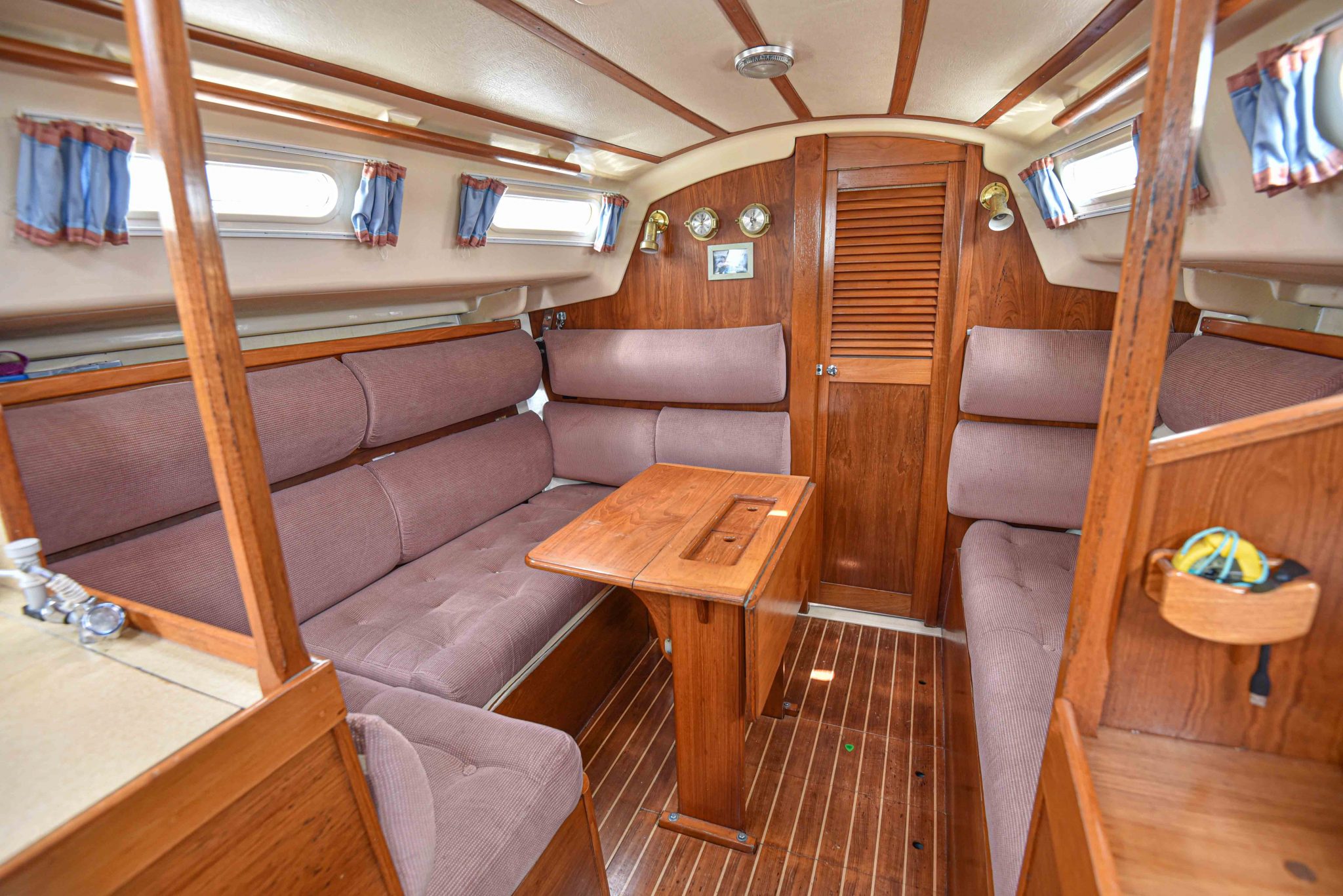
SOLD – No longer available
This is a great example of the Sadler 34 and this particular boat holds historical value in that she is Boat 001 that started a run of c250 of these fine seaworthy yachts. This Yacht benefits from several upgrades in recent years, these are included below with other features of the yacht. New Main Sheet and Systems Sails Overhauled in 2018 Bimini and Spray Hood recently added Seacocks recently serviced Eberspacher Heating (Untested and needs a service) New Cooker in 2018 New Battery Charger and Batteries in 2018 Recent Gas Test new pipes Hot Water Tank Water Pump Fridge Storm Jib and Spinnaker The boat has a survey by her current owner which is available upon request. The owner is moving abroad so regrettably is selling this sought after yacht.
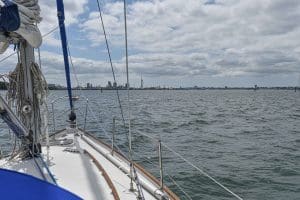
© 2024 Parker Adams Boat Sales Privacy Policy , Cookie Policy .
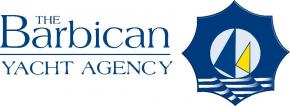
- Listing Template
- Testimonials
- SELL YOUR BOAT

DETAILS
Full spec , sails & rigging , download .

beneteau first 345 sailboatdata
Great choice! Your favorites are temporarily saved for this session. Sign in to save them permanently, access them on any device, and receive relevant alerts.
- Sailboat Guide

Beneteau First 345
Beneteau First 345 is a 34 ′ 6 ″ / 10.5 m monohull sailboat designed by Berret-Racoupeau and built by Beneteau between 1985 and 1988.

Rig and Sails
Auxilary power, accomodations, calculations.
The theoretical maximum speed that a displacement hull can move efficiently through the water is determined by it's waterline length and displacement. It may be unable to reach this speed if the boat is underpowered or heavily loaded, though it may exceed this speed given enough power. Read more.
Classic hull speed formula:
Hull Speed = 1.34 x √LWL
Max Speed/Length ratio = 8.26 ÷ Displacement/Length ratio .311 Hull Speed = Max Speed/Length ratio x √LWL
Sail Area / Displacement Ratio
A measure of the power of the sails relative to the weight of the boat. The higher the number, the higher the performance, but the harder the boat will be to handle. This ratio is a "non-dimensional" value that facilitates comparisons between boats of different types and sizes. Read more.
SA/D = SA ÷ (D ÷ 64) 2/3
- SA : Sail area in square feet, derived by adding the mainsail area to 100% of the foretriangle area (the lateral area above the deck between the mast and the forestay).
- D : Displacement in pounds.
Ballast / Displacement Ratio
A measure of the stability of a boat's hull that suggests how well a monohull will stand up to its sails. The ballast displacement ratio indicates how much of the weight of a boat is placed for maximum stability against capsizing and is an indicator of stiffness and resistance to capsize.
Ballast / Displacement * 100
Displacement / Length Ratio
A measure of the weight of the boat relative to it's length at the waterline. The higher a boat’s D/L ratio, the more easily it will carry a load and the more comfortable its motion will be. The lower a boat's ratio is, the less power it takes to drive the boat to its nominal hull speed or beyond. Read more.
D/L = (D ÷ 2240) ÷ (0.01 x LWL)³
- D: Displacement of the boat in pounds.
- LWL: Waterline length in feet
Comfort Ratio
This ratio assess how quickly and abruptly a boat’s hull reacts to waves in a significant seaway, these being the elements of a boat’s motion most likely to cause seasickness. Read more.
Comfort ratio = D ÷ (.65 x (.7 LWL + .3 LOA) x Beam 1.33 )
- D: Displacement of the boat in pounds
- LOA: Length overall in feet
- Beam: Width of boat at the widest point in feet
Capsize Screening Formula
This formula attempts to indicate whether a given boat might be too wide and light to readily right itself after being overturned in extreme conditions. Read more.
CSV = Beam ÷ ³√(D / 64)
Shallow draft: 5.2’. Tall Rig: I: 45.00’/13.72m J: 12.90’/3.93m P: 38.70’/11.80m E: 12.60’/3.84m SA (100%): 534.06 ft2/49.61 m2
Embed this page on your own website by copying and pasting this code.
- About Sailboat Guide
©2024 Sea Time Tech, LLC
This site is protected by reCAPTCHA and the Google Privacy Policy and Terms of Service apply.
First 345 Beneteau
The first 345 beneteau is a 34.5ft masthead sloop designed by jean beret and built in fiberglass by beneteau between 1985 and 1988., 460 units have been built..
The First 345 Beneteau is a light sailboat which is a reasonably good performer. It is very stable / stiff and has a low righting capability if capsized. It is best suited as a day-boat. The fuel capacity is originally small. There is a good water supply range.
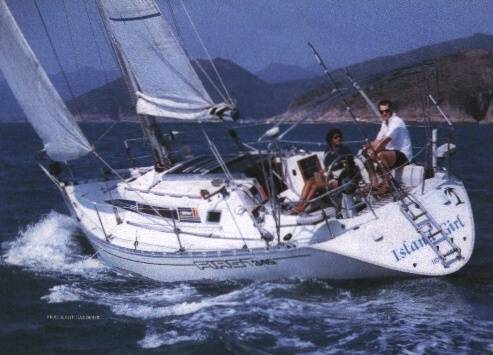
First 345 Beneteau for sale elsewhere on the web:

Main features
| Model | First 345 Beneteau | ||
| Length | 34.50 ft | ||
| Beam | 11.42 ft | ||
| Draft | 6.20 ft | ||
| Country | France (Europe) | ||
| Estimated price | $ 0 | ?? |
Login or register to personnalize this screen.
You will be able to pin external links of your choice.

See how Sailboatlab works in video
| Sail area / displ. | 17.54 | ||
| Ballast / displ. | 45.36 % | ||
| Displ. / length | 182.40 | ||
| Comfort ratio | 19.88 | ||
| Capsize | 2.11 |
| Hull type | Monohull fin keel with spade rudder | ||
| Construction | Fiberglass | ||
| Waterline length | 29.17 ft | ||
| Maximum draft | 6.20 ft | ||
| Displacement | 10141 lbs | ||
| Ballast | 4600 lbs | ||
| Hull speed | 7.24 knots |

We help you build your own hydraulic steering system - Lecomble & Schmitt
| Rigging | Masthead Sloop | ||
| Sail area (100%) | 512 sq.ft | ||
| Air draft | 0 ft | ?? | |
| Sail area fore | 283.80 sq.ft | ||
| Sail area main | 228.69 sq.ft | ||
| I | 44 ft | ||
| J | 12.90 ft | ||
| P | 37.80 ft | ||
| E | 12.10 ft |
| Nb engines | 1 | ||
| Total power | 0 HP | ||
| Fuel capacity | 22 gals |
Accommodations
| Water capacity | 106 gals | ||
| Headroom | 0 ft | ||
| Nb of cabins | 0 | ||
| Nb of berths | 0 | ||
| Nb heads | 0 |
Builder data
| Builder | Beneteau | ||
| Designer | Jean Beret | ||
| First built | 1985 | ||
| Last built | 1988 | ||
| Number built | 460 |
Other photos
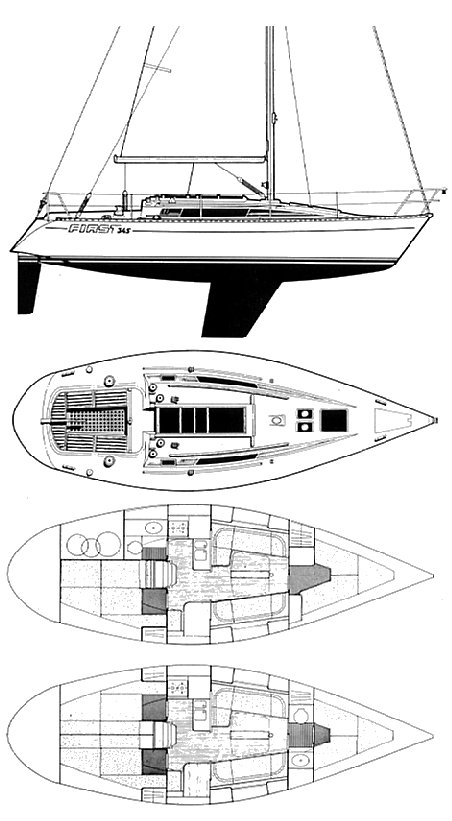
Modal Title
The content of your modal.
Personalize your sailboat data sheet
- New Sailboats
- Sailboats 21-30ft
- Sailboats 31-35ft
- Sailboats 36-40ft
- Sailboats Over 40ft
- Sailboats Under 21feet
- used_sailboats
- Apps and Computer Programs
- Communications
- Fishfinders
- Handheld Electronics
- Plotters MFDS Rradar
- Wind, Speed & Depth Instruments
- Anchoring Mooring
- Running Rigging
- Sails Canvas
- Standing Rigging
- Diesel Engines
- Off Grid Energy
- Cleaning Waxing
- DIY Projects
- Repair, Tools & Materials
- Spare Parts
- Tools & Gadgets
- Cabin Comfort
- Ventilation
- Footwear Apparel
- Foul Weather Gear
- Mailport & PS Advisor
- Inside Practical Sailor Blog
- Activate My Web Access
- Reset Password
- Customer Service

- Free Newsletter

Blue Jacket 40 Used Boat Review

Catalina 270 vs. The Beneteau First 265 Used Boat Match-Up

Ericson 41 Used Boat Review

Mason 33 Used Boat Review

How to Create a Bullet-Proof VHF/SSB Backup

Tips From A First “Sail” on the ICW


Tillerpilot Tips and Safety Cautions

Best Crimpers and Strippers for Fixing Marine Electrical Connectors

Polyester vs. Nylon Rode

Getting the Most Out of Older Sails

How (Not) to Tie Your Boat to a Dock

Stopping Mainsheet Twist

Fuel Lift Pump: Easy DIY Diesel Fuel System Diagnostic and Repair

Ensuring Safe Shorepower

Sinking? Check Your Stuffing Box

What Do You Do With Old Fiberglass Boats?

Boat Repairs for the Technically Illiterate

Boat Maintenance for the Technically Illiterate

Whats the Best Way to Restore Clear Plastic Windows?

Stopping Holding-tank Odors

Giving Bugs the Big Goodbye

Galley Gadgets for the Cruising Sailor

The Rain Catcher’s Guide

Sailing Gear for Kids

What’s the Best Sunscreen?

UV Clothing: Is It Worth the Hype?

Preparing Yourself for Solo Sailing

R. Tucker Thompson Tall Ship Youth Voyage

On Watch: This 60-Year-Old Hinckley Pilot 35 is Also a Working…

On Watch: America’s Cup

On Watch: All Eyes on Europe Sail Racing

Dear Readers
- Sailboat Reviews

Can a boat be all things to all people? Last year in Rhode Island, two sailors who had differing ideas about what a sailboat should be went shopping for one to go partners on. One was mainly interested in performance and wanted a speedy club racer with sufficient amenities for one or two couples.
The second, with a wife and small child, was looking for more of a cruising boat, one that was stiff and stable but with excellent accommodations below. They settled on a Beneteau First 345, and at the end of their first sailing season both were satisfied with their choice.
Beneteau is far and away the most successful sailboat builder in the world right now. Its closest rival is another French company, Jeanneau, and in the United States only Catalina and Hunter match the kind of mass market appeal that Beneteau has enjoyed during the last half-decade. With 30 models available and annual sales last year of more than $70 million, Beneteau clearly is doing something right. Prior to the slowdown of recent years, Beneteau was cranking out 5,000 boats annually, about 400 of which were built in the U.S.
The company was founded by Andre Benjamin Beneteau in 1884 in the Atlantic coast town of Croixde-Vie as a builder of wooden fishing boats. In the mid-60s at the instigation of Andre’s granddaughter, Annette Roux, the firm took its first tentative dip into recreational boating waters with a small yacht called, appropriately, the Halibut. By 1974, Beneteau had captured 11 percent of the French sailboat market, but it wasn’t until the mid- 1980s, when the strong U.S. dollar sent Americans searching overseas for bargains, that the company, along with other European builders, began making serious inroads into the U.S. sailboat market. Today, with Roux as chief executive officer, Beneteau exports 60 percent of its boats, primarily to the United States and Australia.
A favorable currency exchange may have initially attracted American buyers to French boats, but a blend of high style and performance gave them an increasing share of the market. Both Beneteau and Jeanneau had to overcome what Michael Lecholop, Beneteau’s U.S. vice president for sales, called a misperception about their quality created by the strong dollar.
The exchange, he said, made the boats appear to be much cheaper than they actually were. Eventually, Beneteau gained a reputation for producing a boat of reasonable quality at a reasonable price— with the added plus of performance. In 1987, Beneteau felt confident enough of its U.S. sales to build its own plant in Marion, South Carolina. The firm, which had sales of $22 million last year in this country, is third in the American market behind Catalina and Hunter. In terms of quality, Lecholop said Beneteau considers its competition to be Tartan and the now defunct Pearson.

The Beneteau First 345 was designed as a moderate displacement racer/cruiser, and much of its popularity has been because of its success in blending the two functions. In fact, it could be said that the First is a racing boat that contains a cruising interior. The architect is Jean Berret, a Frenchman noted for his cruising and racing designs (he designed the 1985 Admiral’s Cup winner, Phoenix, a Beneteau onetonner).
At 12,600 pounds displacement the 345 is not overbuilt by any means but still substantially heavier than, for example, the Farr 34 (8,176 lbs.) or the J/35 (10,000 lbs.). On the other hand, it’s significantly lighter than a full-keel 34-footer like the Mason 34 (14,020 lbs.) yet carries 690 square feet of sail compared to 602 square feet on the Mason.
The First has a PHRF rating of 120 in four of the largest national fleets (slightly higher in several other fleets), making it reasonably quick—faster by 20 seconds per mile than both the Tartan and Pearson 34, and faster than the Cal 34 and Catalina 34.
Within the Beneteau model line, the First series represents the performance-oriented designs, while the Evasion and the newer Oceanis are geared more for cruising. The fin keel and spade rudder of the 345, coupled with a shallow bottom, have minimal wetted surface. The keel comes in either a deep (6′ 4″) or shoal draft (4′ 10″) version. The boat is mastheadrigged and equipped with running backstays in addition to a permanent backstay, and carries as a norm a mainsail of 258 square feet (roughly) and a genoa of about 431 square feet. The running backstays apparently are necessary to help stabilize the tall stick when going to windward in heavy weather, but they will be a nuisance to the leisurely cruising couple.
The deck is clean and easy to move about, including the side decks leading forward. The cockpit is deep, roomy and protected by its coamings and wide side decks.
The First came with either a cruising or a racing package. In the racing version, the mast is a foot taller, a tiller replaces the wheel and the mainsheet traveler is positioned across the rear of the bridge deck rather than across the cabin top. Unless you are adamant about having a wheel, the racing version seems to make the most sense because of easier access to the traveler. The 345 was in production from 1984 until 1988. More than 500 were sold—all but about 20 built in France.
Construction
French-built boats once bore the reputation of good design-poor quality. The French, their American counterparts would say, lacked modern, temperature- controlled facilities and often turned out suspect laminates. We’re not sure what the old Beneteau facilities were like, but visitors to their newer plants tell a different story. Jono Billings of Jamestown Boat Yard in Rhode Island, an authorized Beneteau repair yard, called the South Carolina plant “the most modern I’ve seen. It’s clean, there’s very little smell and it’s really well organized.”
Jono Billings’ repair work raises another issue about Beneteaus—their reputation for hull blistering. He said that one series of boats was made with a defective catalyst that resulted in a high rate of blistering. The company won a lawsuit against the resin maker and offers free repairs on all affected boats. According to Benetau, the catalyst problem affected several models between 1983 and 1985.
According to our own survey, Beneteau’s overall conblistering record is high-average, about on a par with Pearson Yachts and C & C. The newer Beneteaus, that feature a blister barrier in the gelcoat, come with a limited 10-year warranty.
With six manufacturing plants, there’s no mistaking that a Beneteau is a mass-produced boat with all the signs—interior liners, molded-in berths, lots of veneer, etc. But the result is a surprisingly well constructed boat. Hulls are made of uncored reinforced fiberglass, laid up in alternating layers of chopped strand, omnidirectional mat and woven roving saturated with polyester resin. The hull is reinforced by interior stringers, structural bulkheads and by the interior fiberglass liner and pan.
Deck, cabin top and cockpit are a single glass molding, with built-in nonskid surfaces where appropriate. The deck is balsa-cored, and the 1985 model we looked at exhibited some exposed core material visible from within the chain locker that had been saturated with water, according to a recent marine survey. That trouble spot could herald further the deck delamination, the survey concluded.
The hull-deck joint is a standard inward flange arrangement fastened with 3M 5200 sealant and further strengthened by the aluminum toe rail, which is riveted to the hull. The boats, according to Lecholop, are rated for offshore work under Bureau Veritas standards, the French equivalent of Lloyd’s of London. Still, we prefer through-bolts to rivets; even if strength isn’t the issue, bolts greatly facilitate future repairs.
The Isomat spar is keel-stepped. The keel, which is cast iron rather than lead, is secured to the hull by means of a laminated plate integral with the hull. The keel bolts, visible in the shallow bilge, appeared to be rusty despite a coating of some flexible compound. The rudder is fiberglass with a stainless steel stock (here again, the surveyor found excessive moisture, indicating potential future problems).
One problem with foreign-made boats is that all components may not meet U.S. standards. On the 1985 boat, the surveyor, A.D. Robbins and Co. of Dover, New Hampshire, found that the gate valve shutoff fixtures for the galley sink drain and engine seawater intake apparently were not of marine-grade copper alloys and thus corrosion prone and subject to failure. All other fixtures were bronze or stainless steel and satisfactory.

- Performance
On an early October Saturday, with a moderately strong southeasterly wind blowing, Godzilla (nee Witch of the Waves) moved smartly out of Narragansett Bay on a close reach toward Brenton Reef tower. Sail consisted of an unreefed main of undetermined French make and a 140-percent roller furling jib from Ulmer-Kolius. The 345 is powerful and fast, and easily cut through the waves and over a cross swell coming in from the Atlantic. According to on-board instruments, the boat was moving along at close to its 7.1-knot hull speed on the reach— about normal for the conditions, the owners said. Switching to a beat, in 18 knots apparent, the boat naturally slowed (here, the crew attached the running backstays). On a run back toward the bay, Godzilla sped along at close to seven knots.
With its fin keel and fairly light ballast, the 345 reacted to gusts but was easily controlled. The regular crew felt the helm was nicely balanced, but we detected a tendency to round up in gusts. Some owners responding to our questionnaire also cited annoying weather helm.
The spade rudder, while requiring some working, made for fast tacking and quick response to the tiller. The owner of a 1987 model with a cutter rig reported excellent heavy-weather performance under staysail and reefed main. With a sloop rig, the boat flattens out when reefed before 20 knots. We’ve heard conblistering flicting opinions about the shoal draft version’s pointing ability; based on our sail, the deep keel is closewinded.
The most common complaint in our questionnaires was the boat’s poor speed and maneuverability under power. “Strong helm to fight when under power,” wrote one, whose boat was powered by the standard Volvo 2002. “My only complaint is that under power the boat’s performance is marginal,” another said. The owners of Godzilla, which was powered by a 28-h.p. three-stroke Volvo 2003, had no such complaints. (Engine access from three sides, via the aft cabin and behind the companionway steps, is excellent.)
The cockpit is roomy and comfortable with sufficient freeboard and beam to keep things dry from whatever spray was sent up by the bow. The outboard sides of the coamings, over which the crew can hike out, are patterned with nonskid—a nice touch and “something you won’t find on a cruising boat,” said a racer in the crew.
Shrouds and lead blocks are inboard, allowing narrower sheeting angles. It is difficult, however, for the helmsman to reach the bridgedeck-mounted mainsheet traveler. Raise the jib, and you have a boat that’s best sailed by two.
Clearly the boat is better set up for racing than short-handed cruising. Jibs are trimmed on #43 Lewmar winches retrofitted with cheap rubber collars that serve as a form of self-tailing. In reality, the setup was cumbersome and difficult to release under load; replacing them with genuine self-tailing gear is a priority of the owners.

The interior of the 345 is neat, functional and roomy. The layout, in typical Euro-style, has an aft cabin, dual settees in the saloon and a surprisingly roomy double V-berth forward. The aft cabin, to starboard, is a little cramped vertically, especially the berth under the cockpit—okay for sleeping but not much else. (One couple mitigates this by sleeping athwartships.) Another owner found it the perfect enclosed playpen for his toddler. The 345 comes in a second configuration, with two tiny quarter cabins and the head forward of the main cabin. This version is favored by the charter trade, but the single aft cabin seems preferable for ordinary cruising.
Aft and to port is the head. Both owners liked the location for its privacy and convenience. Like most enclosed heads on a boat this size, the compartment is a little small and could use a grabrail. The head is equipped with a Brydon marine toilet, fitted with a Y-valve leading to a holding tank.
Gray water from the shower is led forward to a bilge sump behind the mast step. Fresh water was contained in two tanks under the settees, totaling about 100 gallons. Some boats have rigid tanks; Godzilla has a flexible, bladder-type tank that seemed in good condition. Its light weight is another concession to performance, and it won’t last as long as a quality rigid tank.
The L-shaped galley is forward of the head and equipped with a three-burner propane Electrolux stove. Refrigeration is an icebox. To starboard, there is a good-sized chart table, a bit cramped for head- room on the outboard side for anyone over 5′ 10″. The main saloon is spacious, the double settees comfortable (one reader praised the quality of French foam). The amidships table contains Beneteau’s trademark wine rack plus additional storage space in the legs; beneath it is another trademark—the small bilge cover that converts to a dustpan. Headroom is more than six feet. Storage is ample and inconspicuous throughout.
It’s almost impossible to find the inside of the hull because of the liner, the liberal use of teak veneer, and padding on the upper bulkheads and ceiling. The overall appearance is pleasant, not gaudy, and the padding is functional as well as aesthetic. Nevertheless, we’d hate to search for the source of a serious leak beneath all the interior decoration. In the original Benetau First series, the settees and bunks were covered in subdued fabrics—green in this instance; the newer First S-series have the unusual Philippe Starck interiors with dark wood bulkheads and lots of silver and stainless steel, which Lecholop said “you either hate or love, but you won’t forget.”
The forward V-berth cabin, apparently the sleeping spot of choice for most 345 owners, is spacious, comfortable and private. There’s a hanging closet to port, drawers to starboard and lots of natural light from a translucent hatch.
Natural lighting in the main cabin is supplied by side ports covered outside with a sporty, one-piece smoked Plexiglas panel. This is an inexpensive way to manufacture portlights, and it is stylish, but of course they cannot be made to open and the absence of frames often makes for an unfinished look. There is a double overhead sliding hatch that also serves as a spinnaker launching area. Several owners complained that the overhead fluorescent lighting is too dim.
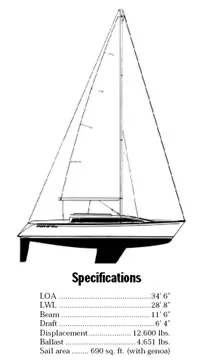
Conclusions
Satisfied Beneteau 345 owners list style and performance as their motivation for selecting this model. They also refer to good value for the money. We’d have to agree on all points. You can get a Beneteau for under $50,000—in the low forties for an older model, which is somewhat more than a Hunter 34 but slightly less than a comparable Tartan. The boat sails exceptionally well, and the interior is pleasant and accommodating. It’s not a Swan or a Sabre, but it is a reasonably well-put-together production boat that sells for a fair price.
The boat’s strong point is definitely its performance. The deep narrow fin keel and spade rudder, plus shallow bilges, running backstays and flexible water tank make it unsuitable for long-term cruising. We worry too about the riveted toerail, maintenance on the iron keel and gate valves—all indicators of less than top quality construction.
RELATED ARTICLES MORE FROM AUTHOR
Attention Darrell Nicholson.
I am considering
LEAVE A REPLY Cancel reply
Log in to leave a comment
Latest Videos
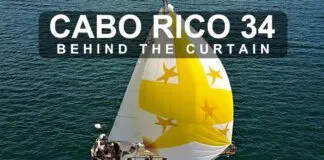
Cabo Rico 34 Boat Review

Super Shallow Draft Sailboat: The Leeboard Sharpie

Hans Christian 41T – Boat Review

Seven dead after superyacht sinks off Sicily. Was the crew at...
Latest sailboat review.
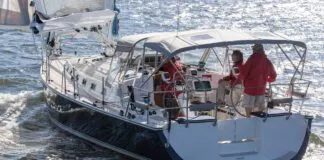
- Privacy Policy
- Do Not Sell My Personal Information
- Online Account Activation
- Privacy Manager
1983 Beneteau First 345
Report error
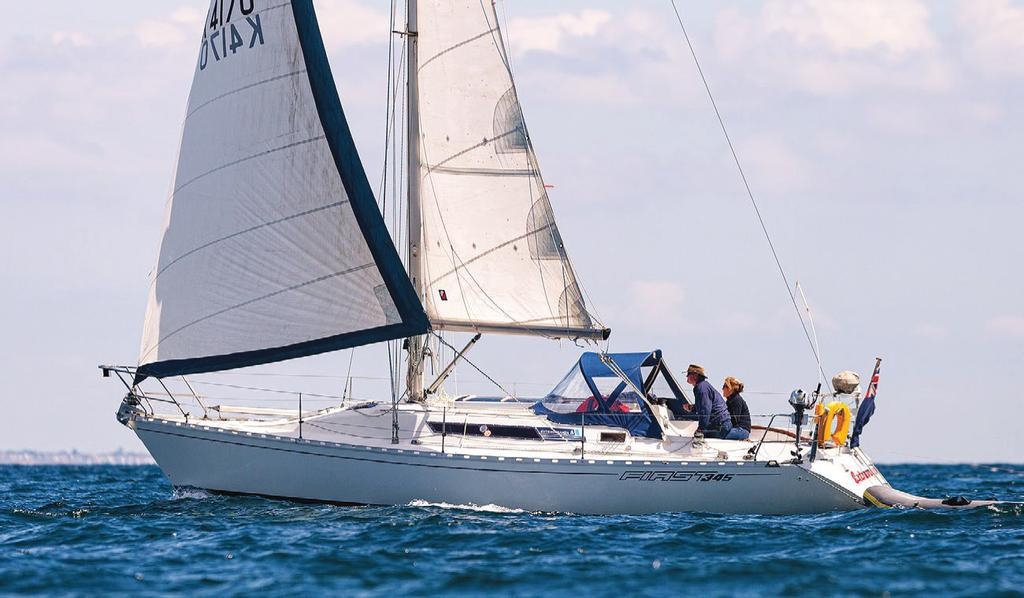
No gallery images

Boat Overview
Hull material, composite_material, boat length (loa), see all details, boat description.
Picture a marriage between the First 38 and the First 42, with all their qualities combined under the positive influence of the First 456, the First admiral of the range. Immediately you get the First 345, a superb 10.55m sailing boat, signed by Jean Berret.
Discover the Pro
Hide ads, help pay for servers & development and unlock Pro only features like, sharing, advanced dashboard, extra storage space & more!
| Name | Value |
|---|---|
| Maker | |
| Maker website | |
| Model | First 345 |
| First built hull | 1983 |
| Last built hull | 1988 |
| Price | 29,499 $ |
| Boat type | |
| Category | |
| Hull type | |
| Hull material | |
| Cabins | 2 |
| Births | 6 |
| Heads | 1 |
| Name | Value |
|---|---|
| Top speed | 11.65 |
| Length overall | 11 |
| Length at waterline | 8.9 |
| Beam overall | 3.54 |
| Headroom | 1.95 |
| Draft maximum | 1.89 |
| Displacement | 5,100.19 |
| Ballast weight | 1,999.89 |
| Ballast type | Cast iron |
| Helm | 1 tiller |
| Rudder | 1 spade rudder |
| Cockpit | Closed aft cockpit |
| Name | Value |
|---|---|
| Naval architect | |
| Name/Studio | Jean Berret |
| Website |
| Name | Value |
|---|---|
| Spars | Mast and boom in Aluminum |
| Standing rigging | 1x19 strand wire |
| Number of spreaders | 2 |
| Spreaders angle | Swept-back |
| Upwind sail area | 64.01 |
| Downwind sail area | 113.16 |
| Mainsail A | 258 |
| Headsail A | 431 |
| Headsail B | 248 |
| Headsail C | 82 |
| Spinnaker A | 960 |
| Name | Value |
|---|---|
| Engine A | |
| Fuel | Diesel |
| Power | 18 HP |
| Type | Inboard |
| Name | Value |
|---|---|
Performance & Ratios
| Name | Value |
|---|---|
| Sail Area to Displacement (SA/D) | 0.05 |
| Upwind SA to Displacement | 21.97 |
| Downwind SA to Displacement | 38.84 |
| Hull Displacement Speed | 0.05 |
| Displacement to Length (D/L) | 7.24 |
| Ballast to Displacement (B/D) | 0.39 |
| Capsize Screening Formula (CSF) | 2.07 |
This boat can be found in Deep Draft and Shoal Draft.
Yachting World
- Digital Edition

Beneteau First 34.7 review: from the archive
- Matthew Sheahan
- May 3, 2021
"This is the most refined IRC boat we have produced," so says Farr Yacht Design president Russell Bowler when speaking about the Beneteau First 34.7

By using a set of inner and outer moulds, the hull and internal structure are created in one hit by a combined process of infusion and injection. Credit: Beneteau Credit: Beneteau
Product Overview
Manufacturer:.
Beneteau are clearly very proud of the new Beneteau First 34.7 have issued several bold statements about the complexity of the new boat in their ever expanding stable.
How could such a small production racer-cruiser be so complex? When viewed from her port side she hardly looks revolutionary.
Sure, her sawnoff transom is quite trendy, but overall her appearance in elevation gives her the look of a scaled-down Beneteau First 40.7 and although this boat has been a firm favourite with the IRC fleet, she doesn’t stand out in a crowd.
Look at the starboard side and you have the first clue as to what the fuss is about. A carbon retractable bowsprit, a first for Beneteau , is a standard item aboard this new model.
Her carbon mast on the other hand is a £9,000 option, which includes rod rigging. And all but a couple of the first 60 boats that comprise Beneteau’s 2006 production will be fitted with a black spar as opposed to the alloy standard.

Her large stainless wheel spans almost the entire width of the cockpit.
While not strictly a first for Beneteau, the rapid adoption of the carbon option is a significant change in the market.
When she’s viewed out of the water, the Beneteau First 34.7’s T-keel is another big change, as is her small rudder. So, what has spurred the switch? Within the brief to the Farr office was the stipulation that the new boat should perform well under IRC.
According to Farr Yacht Design president Russell Bowler the fact that stability is not assessed under the rule emphasised the need to produce a boat with as much righting moment as possible, yet light with it.
This meant there would be a big emphasis on weight in the keel and weight-saving everywhere else. Reducing the wetted surface area was also very important.
Nothing particularly new here other than that as a production racer-cruiser she had to be durable and built to a price, constraints that don’t always exist for full-on race boat commissions.
The design process began with accurate positioning of the centre of buoyancy to achieve a slippery yet seaworthy boat.

The First 34.7 is a bold move for Beneteau.
After this, early design considerations involved matching the centre of effort of the sail plan against the keel fin.
The balancing act continued with the centre of gravity of the keel bulb against the centre of buoyancy of the hull. A typical L-shaped keel would place the ballast too far aft and require more volume aft in the hull. The solution was a T-bulb configuration.
Here, a flattened bulb with soft chines to get the centre of gravity of the ballast as low as possible, as well as achieving the greatest effective span on the fin.
Above the waterline the sail plan is in keeping with similar boats, with a provision for overlapping head sails up to 150 per cent on the fractional rig.

The designers piled on ‘as much downwind sail area as we dared’ …
But when it comes to the downwind area, the masthead asymmetric spinnaker stacked on the cloth with 91m² (980ft²) of sail. In Bowler’s words: “We squeezed as much downwind sail area in as we dared.”
Maximising righting moment means keeping weight out of the boat elsewhere, but the brief for the Beneteau First 34.7 meant it could not be a stripped-out racer. Beneteau’s answer was a simple but bold one when it came to her layout and construction.
Maximising space
Down below, the absence of a forward cabin is noticeable from the minute you enter her saloon.
Instead of the more normal Vberth double forward cabin, a large heads occupies the space forward of the mast.
Positioning the heads here not only keeps the weight of a conventional cabin out of the bow, but provides a convenient wet area for retrieving the kite through the large foredeck hatch.
In fact, Beneteau have also developed an option for a 470-style kite bag that clips into the hatch area.

The nav station and galley are both well proportioned.
The main saloon has a pair of simple settee berths either side of the fixed table that utilise the inside face of the hull as the seat backs. This maximises the feeling of space and keeps weight to a minimum.
The chain plates are linked to mini-bulkheads that transfer the load down to the keel without the need for beefy longitudinals to attach tie rods to, again saving weight.
Further aft a simple yet spacious and effective galley is set to port with plenty of stowage space and easy comfortable access.
Opposite lies a small dedicated navigation area; again, practical, well-proportioned and with plenty of stowage for blocks, tackles, tools, duct tape and all the other odd items that keep a race boat going on the course.

Deceptively simple, the open and practical interior is actually much cleverer than you might think.
Stowage for the anchor, chain and warp is under the floor at the bottom of the companionway – easy to access and keeping weight amidships and low.
Under the cockpit lie two double cabins, which can either be supplied as an open-plan arrangement or with the starboard one of the two built with a door to form an owner’s cabin. I’m not sure why you might want this option aboard a raceboat, but no doubt there are some who think differently.
For construction, her deck has been injection-moulded to provide a clean finish inside, so no inner liner is required.
More significant is the move to a completely integrated hull and floor structure thanks to Beneteau’s new lnfujection system.
By using a set of inner and outer moulds, the hull and internal structure are created in one hit by a combined process of infusion and injection.
Although the construction technique has been driven largely by environmental pressures and the need to control emissions, Beneteau say it ensures greater accuracy in the resin-to-fibre ratio of the boats, as well as the consistency of overall weight.
What’s she like to sail?
But for all the techie talk, what is she really like? Such is the obsession with 40-footers, there’s a tendency to see something in the mid-30s as being on the wee side.
This is not the case with the Beneteau. Indeed, place her alongside a 36.7 and she feels a bigger boat in all areas apart from the foredeck. And the same is true when you take the helm.
Her large stainless wheel spans almost the entire width of the cockpit, the beamy open transom exaggerates the feeling of space and the long cockpit allows plenty of room for the crew to work the area without clambering over each other.
All this in a cockpit that’s deep enough and sufficiently secure to take the family cruising every now and then, as well as having a set of decent cockpit lockers, something the X-35 lacks.
Under way she has a solid, dependable, chunky feel to her helm. Lock to lock is just over half a turn, which on most boats would produce a twitchy feel, but not aboard the Beneteau First 34.7. In fact, it took me some time before I realised.

Easy and rewarding to sail.
Instead, she’s direct, smooth and has a comfortable seating position for the helmsman who can sit astride the wheel without crowding the mainsheet trimmer.
Upwind she’s easy to get into the groove and downwind she has the sprightly feel of a bowsprit-blaster, where the rewards of heating her up on a reach require a quick response to bear away as she picks up speed or a gust comes through.
Up to here she’s an easy boat to get on with, but lose concentration and she’ll bite. Although we never lost control downwind with the rudder completely immersed and the boat speed up in the 7-9 knot range in just 10-14 knots of true breeze.
Upwind she’s more prone to losing grip and rounding up if the helmsman and mainsheet trimmer are not keeping her on her feet.
Even in flat water and with what you might think is reasonable feedback through the wheel, she gives little warning and once the rudder has stalled there’s no regaining control until you’ve got her back on her feet.
The problem stems from the rudder’s size, a deliberate design trade-off under IRC. Rudders are not measured under the rule, so keeping it small reduces drag downwind.
But to make this side of the equation work, careful mainsheet trim upwind is vital to avoid unwanted handbrake turns.Aside from this little quirk, other niggles were to do with her control line layout, which isn’t as refined as the X-Yachts X-35.
Trimming the main with the coarse and fine tune in hand, along with the mainsheet traveller and the backstay, makes you feel like a circus act trying to ride two horses.
The fine-tune block and jammer need to be fastened to the mainsheet car rather than the pedestal moulding to make full use of the traveller and a windward sheeting car would make life that bit easier for the mainsheet trimmer through the tacks.
Elsewhere, cross-sheeting the spinnaker sheet onto the secondary winches might get your weight to weather, but the sheet chafes against the cockpit coamings.
Upwind the positioning of one of the stanchions makes skirting the genoa more tricky than normal and the solid kicker obstructs the 20/20 displays.
Admittedly these are niggles that could easily be sorted, but they are nonetheless further examples of the difference between this boat and the X-35.
Nevertheless, overall, I was very impressed with this boat. She felt like a good handicap racer, a boat that could be picked up and raced effectively in very little time and one that would light up in a breeze downwind.
This, along with her simple but practical accommodation layout, makes her a well-rounded design and an appealing choice.
First published in the May 2006 issue of YW.
If you enjoyed this….
Yachting World is the world’s leading magazine for bluewater cruisers and offshore sailors. Every month we have inspirational adventures and practical features to help you realise your sailing dreams. Build your knowledge with a subscription delivered to your door. See our latest offers and save at least 30% off the cover price.
First 345 Deep draft
Sailboat specifications.
- Last update: 15th March 2020
First 345's main features
First 345's main dimensions, first 345's rig and sails, first 345's performances, first 345's auxiliary engine, first 345's accommodations and layout.

Similar sailboats that may interest you:
The Beneteau First 345 is a popular sailboat model that was first introduced in 1983. It was designed by Jean Berret and Phillipe Starck, and it quickly became known for its exceptional sailing performance and spacious interior. The Beneteau First 345 has a length of 34.5 feet and a beam of 11.4 feet, making it a comfortable and stable vessel for cruising or racing. It has a fin keel and a spade rudder, which allows for responsive handling and easy maneuverability.
Inside the cabin, the Beneteau First 345 features a spacious layout that can accommodate up to six people. The interior is finished with high-quality materials and includes a large saloon, a fully equipped galley, and two private cabins. The boat also has a spacious head with a shower and ample storage space throughout. With its winning combination of performance and comfort, the Beneteau First 345 remains a popular choice among sailors and continues to be a sought-after vessel on the used boat market.
LOA: 34.50 ft LWL: 29.17 ft Beam: 11.42 ft Draft: 6.20 ft Displacement: 10141.00 lbs Ballast: 4600.00 lbs Hull type: Fin w/spade rudder Hull construction: FG Rigging type: Masthead Sloop
Beneteau First 345 for sale in the last 12 months
Below you'll find the latest Beneteau First 345 listings for the last 12 months. We compare the listing price with boats listed in the past and the color coding indicates if the price is good (green = below the average listing price) or more on the expensive side (red = seller is asking more than the average listing price).
| Date | Year Country, State | Price | Details |
|---|---|---|---|
| 2023-10-26 | 1985 | USD 24950 |
Beneteau First 345 listing prices over time
Listing details.
FIRST 345 (BENETEAU) Detailed Review

If you are a boat enthusiast looking to get more information on specs, built, make, etc. of different boats, then here is a complete review of FIRST 345 (BENETEAU). Built by Beneteau and designed by Berret-Racoupeau, the boat was first built in 1984. It has a hull type of Fin w/spade rudder and LOA is 11. Its sail area/displacement ratio 20.96. Its auxiliary power tank, manufactured by Volvo Penta, runs on Diesel.
FIRST 345 (BENETEAU) has retained its value as a result of superior building, a solid reputation, and a devoted owner base. Read on to find out more about FIRST 345 (BENETEAU) and decide if it is a fit for your boating needs.
Boat Information
Boat specifications, sail boat calculation, rig and sail specs, auxillary power tank, accomodations, contributions, who designed the first 345 (beneteau).
FIRST 345 (BENETEAU) was designed by Berret-Racoupeau.
Who builds FIRST 345 (BENETEAU)?
FIRST 345 (BENETEAU) is built by Beneteau.
When was FIRST 345 (BENETEAU) first built?
FIRST 345 (BENETEAU) was first built in 1984.
How long is FIRST 345 (BENETEAU)?
FIRST 345 (BENETEAU) is 8.9 m in length.
What is mast height on FIRST 345 (BENETEAU)?
FIRST 345 (BENETEAU) has a mast height of 11.52 m.
Member Boats at HarborMoor
- Oceanis 30.1
- Oceanis 34.1
- Oceanis 37.1
- Oceanis 40.1
- Oceanis 46.1
- Oceanis 51.1
- Oceanis Yacht 54
- Oceanis Yacht 60
- FIGARO BENETEAU 3
- Heritage sailing yacht
- Flyer 6 SUNdeck
- FLYER 6 SPACEdeck
- Flyer 7 SUNdeck
- Flyer 7 SPACEdeck
- Flyer 8 SUNdeck
- Flyer 8 SPACEdeck
- Flyer 9 SUNdeck
- Flyer 9 SPACEdeck
- Antares 7 Fishing
- Antares 8 Fishing
- ANTARES 11 FLY
- Gran Turismo 32
- Gran Turismo 36
- Gran Turismo 41
- Gran Turismo 45
- Swift Trawler 35
- Swift trawler 41 Sedan
- Swift trawler 41 Fly
- Swift Trawler 48
- Swift Trawler 54
- Grand Trawler 62
- Heritage motorboats
- A REMARKABLE ANNIVERSARY
- Architects and Designers
- Become a BENETEAU boat owner
- Tests and Awards

BENETEAU’s historical line places the emphasis on speed and design, and the pleasure is the same whether you are cruising or racing. This mixed use is specific to the First, which proudly boasts a taste for performance at sea, even in light air. Designed by well-known architects, the boat has left its mark on performance cruising, and it is now the gold standard.
Iconic Line
Easy to handle.
A gold standard.
- Sailing Programmes
With beautifully slender hulls and a style second to none, First yachts have always caught the eye of seasoned sailors. From the outset, they were designed to thrill keen regatta racers and demanding performance sailors and they epitomize the joy of sailing like no other boat. Boasting the most advanced engineering, their performance under sail is a gauge for winning races whatever the sailing grounds. But they are also ideal for cruising with family or friends and will make the thrill of travelling the seas a new passion. This mixed use and the sailing community’s satisfaction has led to the success of the line.
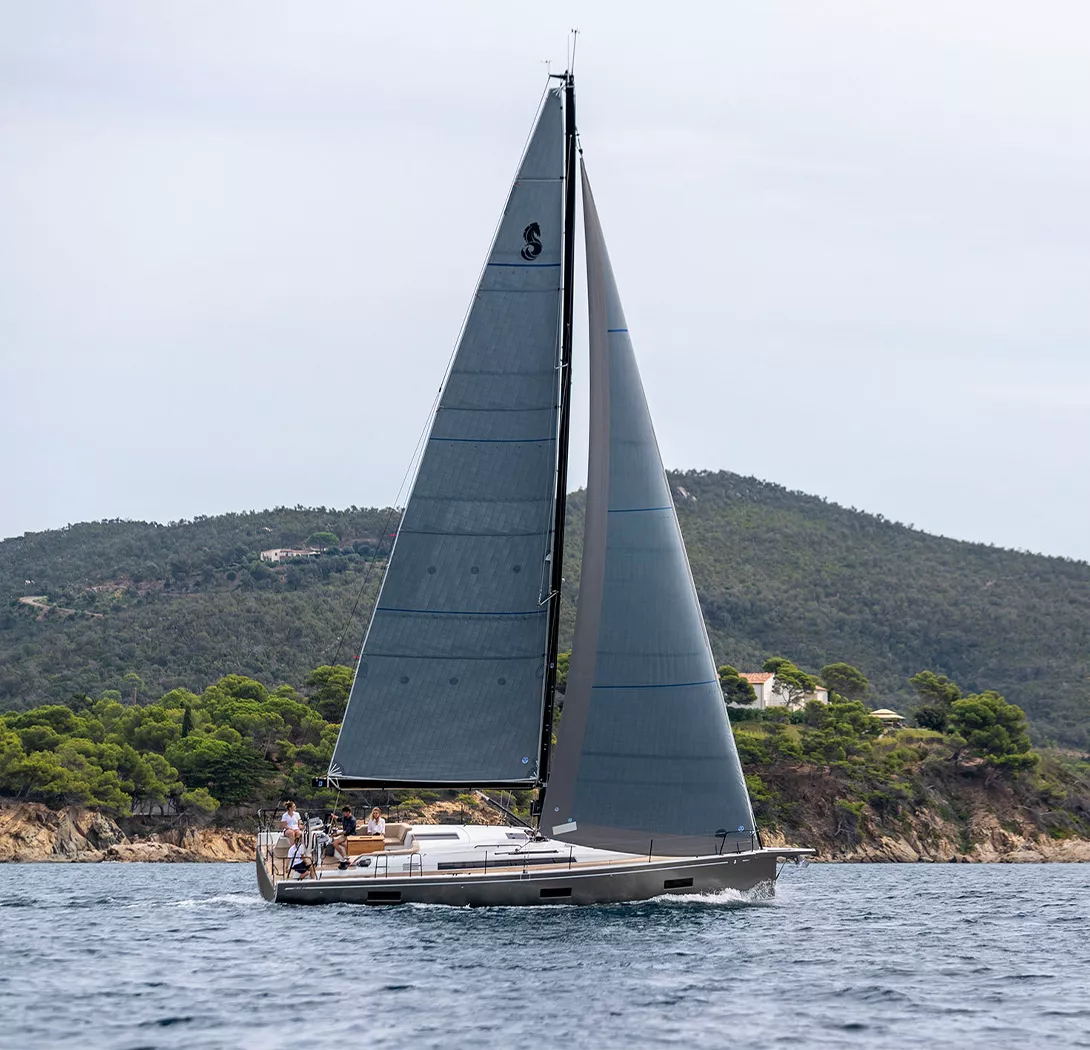
Roll on Performance
As soon as you cast off, you feel the thrill of sailing a First. All it takes is to hoist the sails and these fast cruisers give their best performance. Thanks to a taut hull that is specially designed to be light weight, the boat flies along in the slightest breeze. Look out for the puff that propels the First forward and enjoy its surfing potential at any speed.
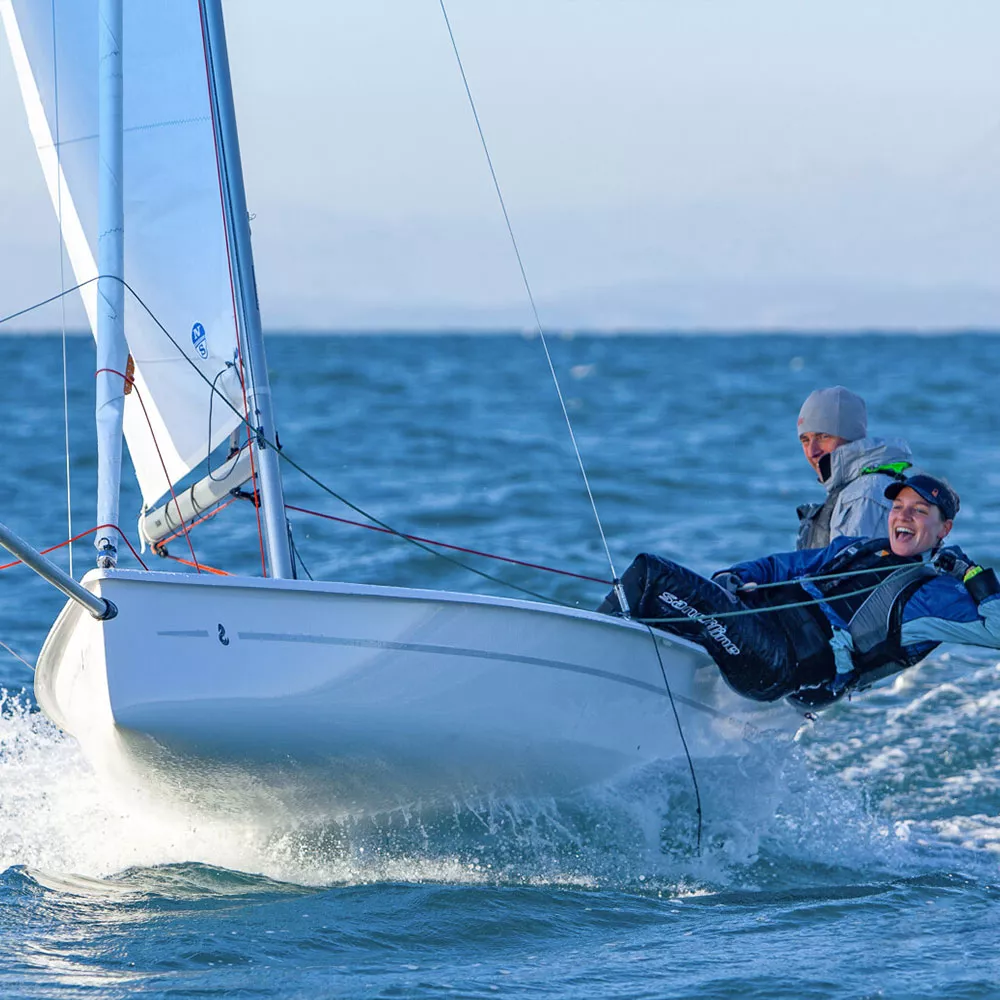
The First sailing yachts are designed to make sailing easy and exciting, so that everyone can enjoy the sailing experience. They are reassuringly stable, even in a good breeze, and they are always safe and a pleasure to sail, no matter how big or small your crew is. Sail hoisting manoeuvres are fluid. Sailing is safe and effortless.
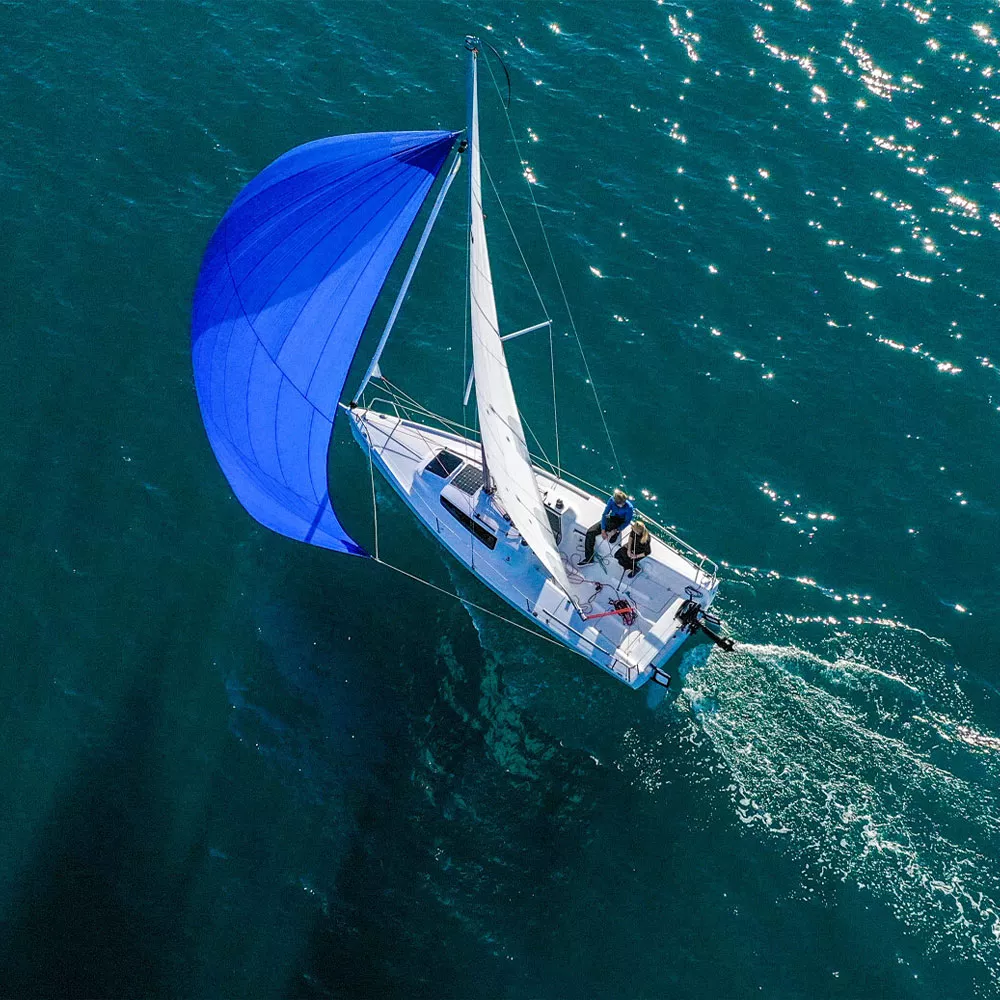
A remarkable team
Similar to the IMOCA or Class40, the new First 36 and First 44 have their own legacy, built on considerable technical expertise. The FIRST yachts are designed and developed by a design team of architects, designers, engineers, our partner sailmakers, and mast and deck fitting manufacturers to optimise every detail and ensure that they all have the latest technology and expertise.

The first model in the line – the First 30 – was the boat used for three years by the Tour de France à la Voile, and many racers also chose it for the Course de l’Aurore (former Solitaire du Figaro) including Michel Malinosky, Eugène Riguidel and Bruno Peyron.
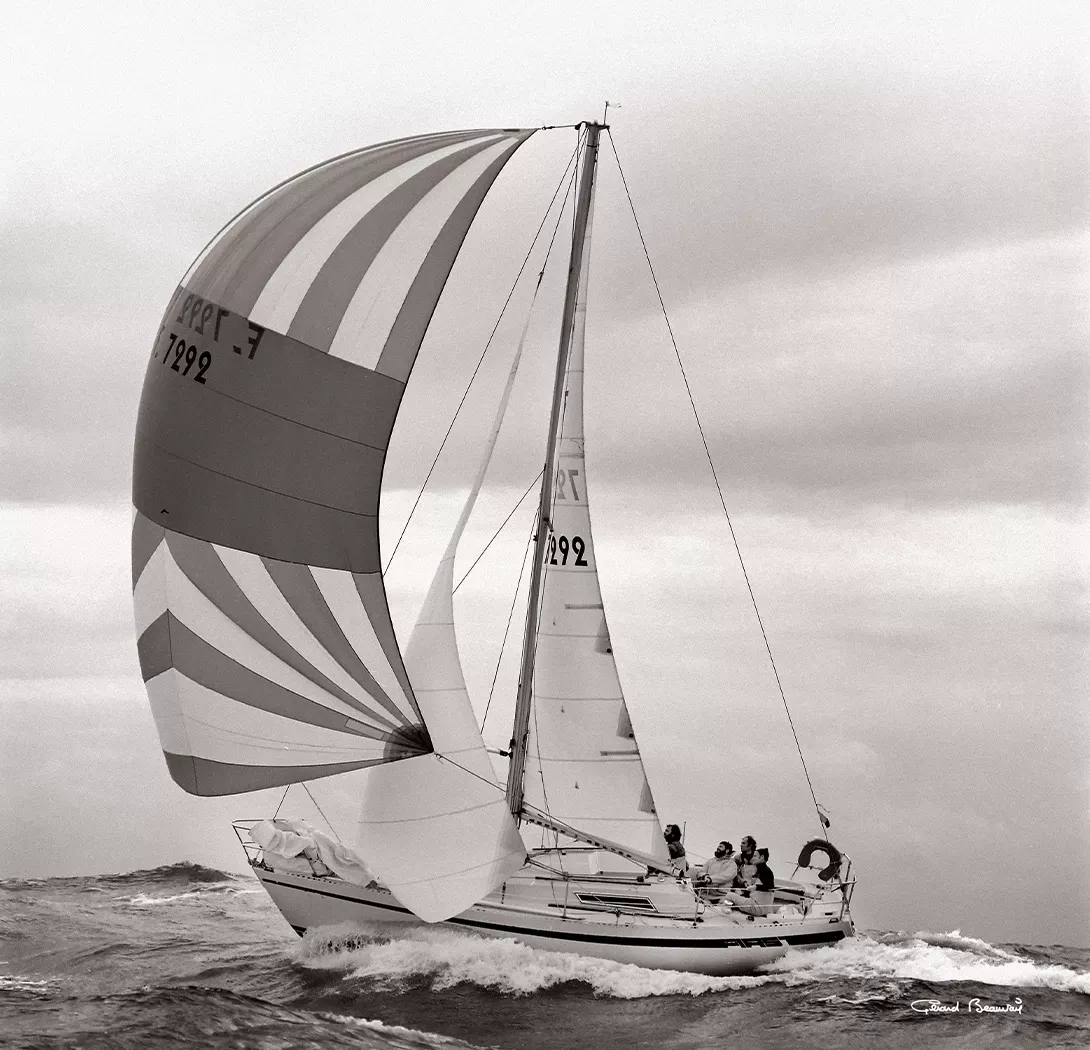
Outstanding Performance and Open to a Variety of Sailing Programmes
First sailing yachts are highly versatile and can be used for all sorts of programmes. They are ideal for a trip to sea to fine tune your boat and get out your code zero or asymmetric spinnaker with a crew that loves sailing whatever the weather. They are perfect for a weekend, making the most of the First’s speed and setting sail for a distant anchorage. They are great for a holiday, to enjoy the pleasure of coastal or ocean cruising in a well-equipped boat.
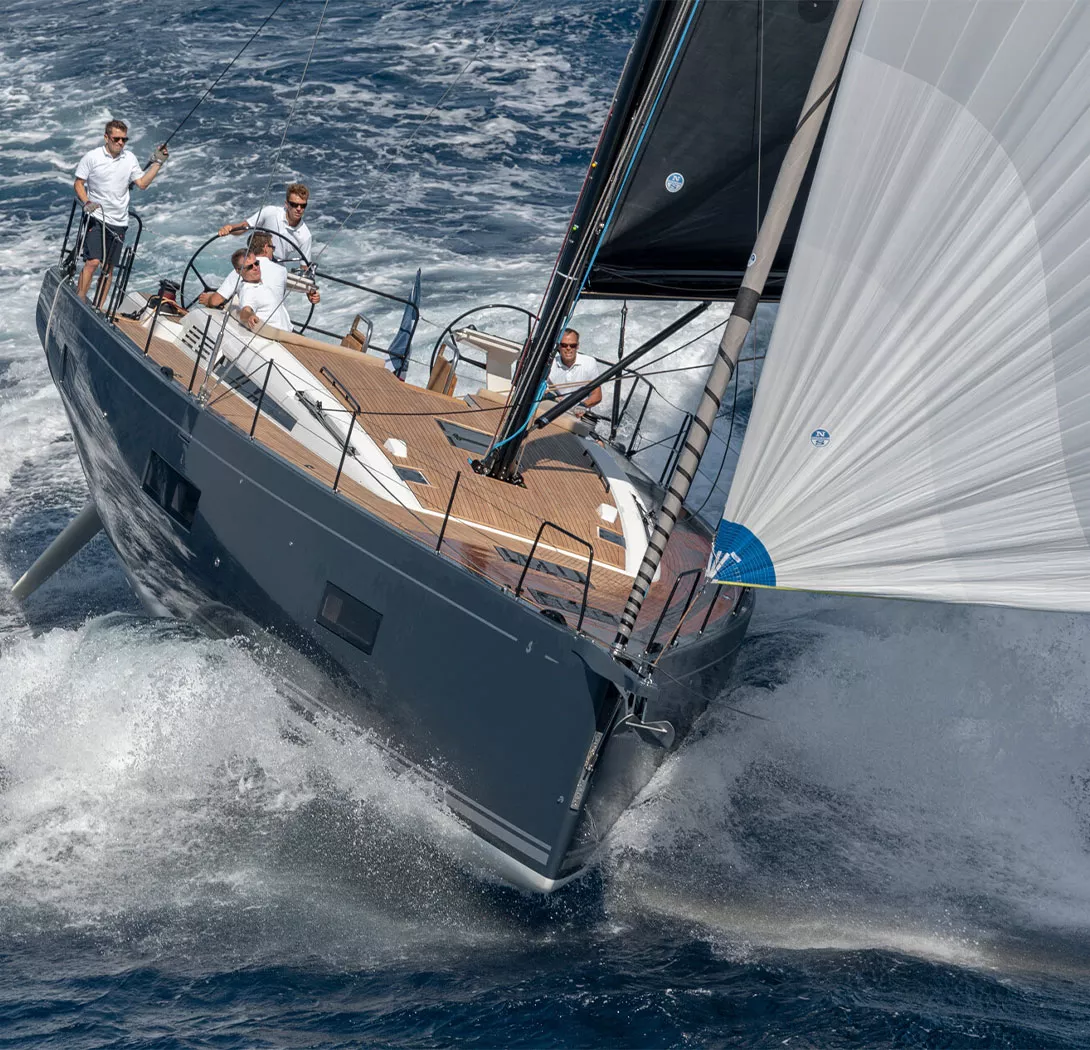
All First news

Limited offer on the First 36 model
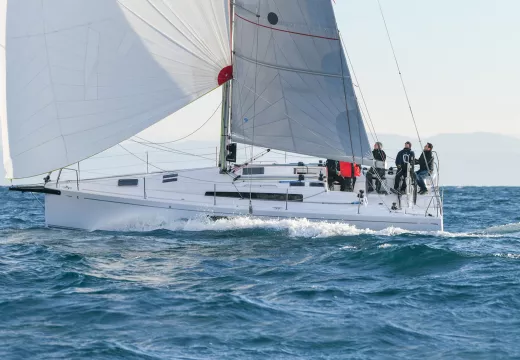
Claus, owner of a First 36
“Cruising suddenly became more fun“
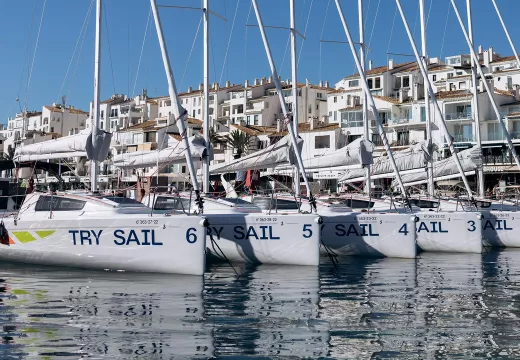
Introducing newcomers to the wonders of sailing
Denis Kotlyarov and Vera Konashenok have created a new way for people from any background to taste the beauty of sailing.
Models of the range
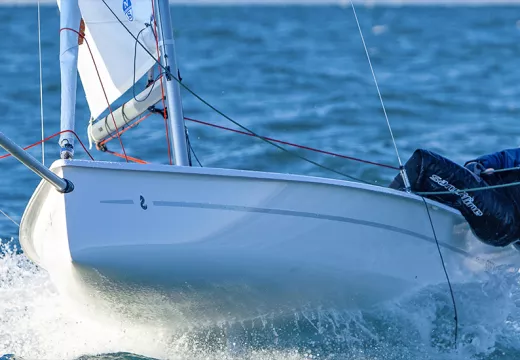
Length Overall
4.3 m / 14’1’’
Beam overall
1.7 m / 5’7’’
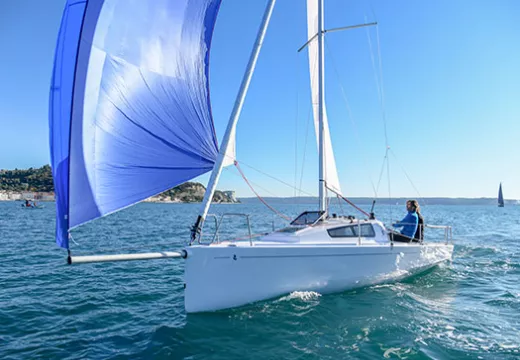
7.29 m / 23’ 11’’
2.5 m / 8’ 2’’
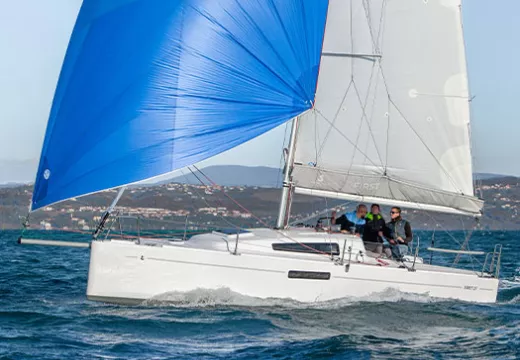
7.99 m / 26’ 3’’
2.54 m / 8’ 4’’
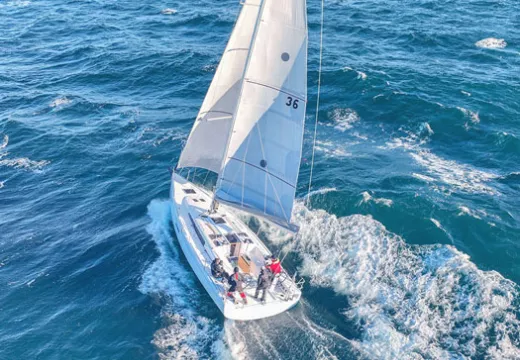
10.97 m / 36'0"
3.8 m / 12'6''
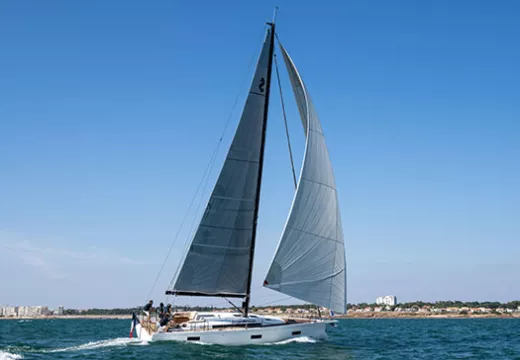
14.65 m / 48’1’’
4.25 m / 13'11''
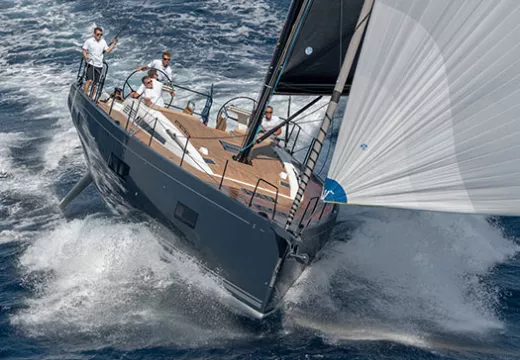
17.12 m / 56’2’’
5 m / 16’5’’
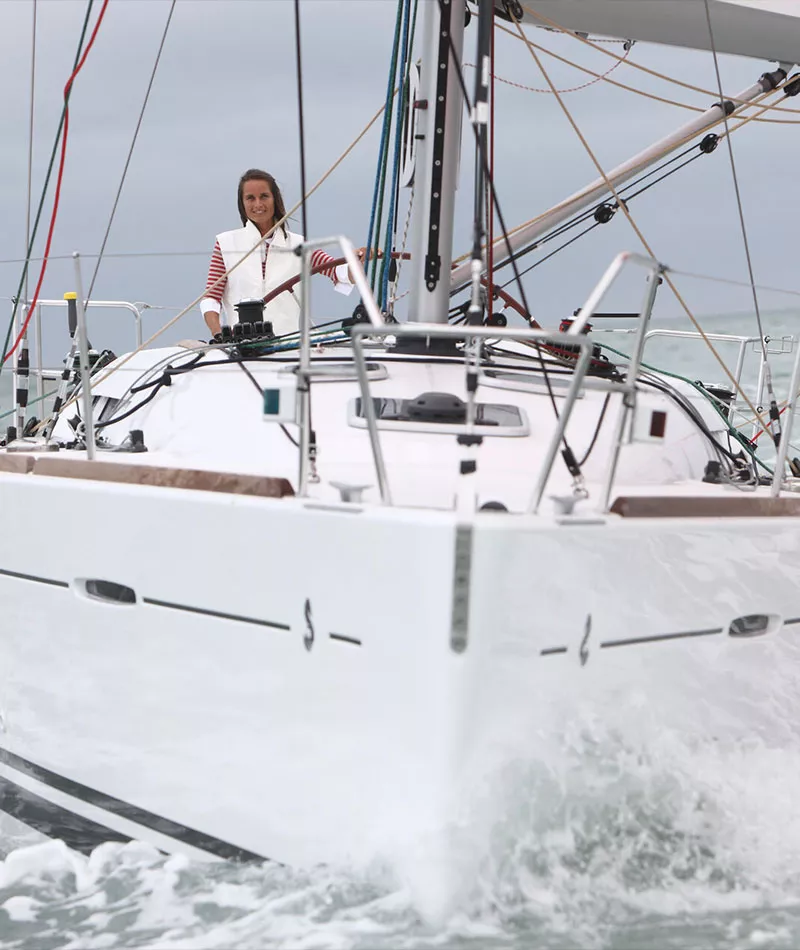
Former First
"We would redesign the sail plan, keel, interior layout, and shape of the coachroof with André Mauric, and it would be called the First. Nobody was expecting this. We showed the First at the Paris Boat Show and it was a revelation. It would become a legendary class. This was the boat that would really open the way for export. "
Annette Roux - 130 years of commitment to the sea (1980)
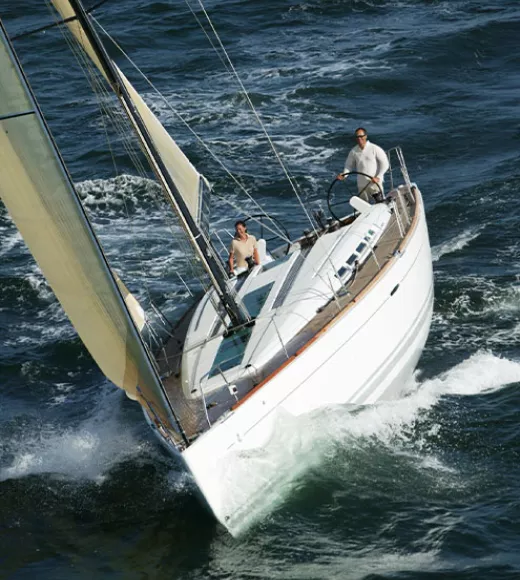
Select your area and your language
- American english
- Chinese, Simplified
Tomsk topographic map
Interactive map.
Click on the map to display elevation .
A pilot screening of prevalence of atopic states and opisthorchosis and their relationship in people of Tomsk Oblast

2007, Parasitology Research
Related Papers
Public Health Open Access
stephen aremu
Introduction: Opisthorchiasis is no doubt one of the most neglected infectious disease inspite of its huge medical importance in some parts of the World. The past decade have seen a resurgence of interests in research relating to this public health issue, however there is still a lot to be done. Social Model: Not many models have been explored in Western Siberia to deal with the opisthorchiasis epidemic when compared to the different models that have been used for other regions affected by similar disease. Life Cycle: The complex life cycle of Opisthorchis felineus has humans and other feline species as definitive host and is really prevalent among the aboriginal population of the Western Siberian because of their habit of eating raw or undercooked fresh water fish (Cyprinidae) which are intermediate host of the parasite. Diagnosis and Treatment: Diagnosis involve the use of stool microscopy, other methods such as mAb ELISA, LAMP and so on are used, while the common treatment is the...
Charlotte Braun-fahrländer
World Allergy Organization Journal
Maria Prisco
Izabela Kupryś-Lipińska
Introduction: A dramatic increase in the prevalence of atopic diseases can be observed. The reasons for this phenomenon remain unclear. Aim: To compare the prevalence of atopic diseases in subjects living in the city centre and a rural area. Material and methods: The study was done on a randomly chosen group of inhabitants of Lodz province, aged 3 to 80 years, living in two different areas: the city centre and a rural area. Demographic data and the anamnesis were collected on the basis of standardised questionnaires. Additionally, skin prick tests and screening spirometries were performed. Results: The complete data from 482 subjects living in the city centre and 469 in the rural area were included in the analysis. Asthma prevalence in the city centre was estimated at 13.2% in adults and 18.4% in children compared to 4.2 and 6.0% respectively in the rural area. The prevalence of seasonal allergic rhinitis in the city centre was 13.2% in adults and 16.1% in children, in comparison to...
Online journal of biological sciences
Alexandra Tegza
Clinical & Experimental Allergy
Silver Siiak
Journal of Parasitic Diseases
Amin Ahmadi
PLoS Neglected Tropical Diseases
Hafizatul Zan
Suez Canal Veterinary Medical Journal. SCVMJ
Eman Youssef
RELATED PAPERS
Hicham Attouch
Sergio Ramírez González
Kodrat Wibowo
Anju Nofarof Hasudungan
Diego Renato Solano Vargas
Sezione Di Lettere
Kemal A Ridla
arijit sarkar
Pascale Chevalier
Culture, Is It Codified? Vol.1
Dr. William Anderson Gittens D.D.
James M. Dorsey
Javier Ramirez
اعظم اکبری نژاد
Mobin Idrees
Abrar Tanjung, ST., MT
SEG Technical Program Expanded Abstracts 2002
Indrajit Roy
Rodrigo Leite Da Silva
jhlkhg hgktyyh
Drugs in Context
Kishor Wasan
ugfgdh tgsffg
dfndfnnvn fnn
IVC毕业证成绩单 grt
申请本科硕士《 Leeds B毕业证成绩单》 fr
Inscriptions
F.L.S. Timmenga
long essay to send to your girlfriend


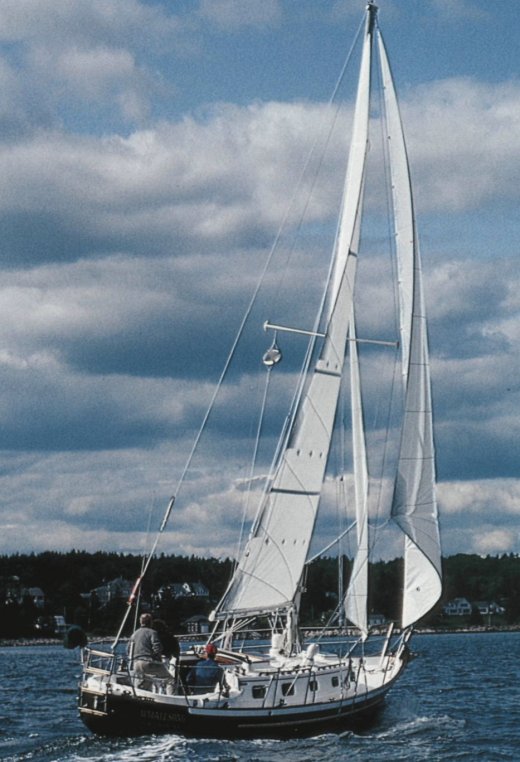
IMAGES
VIDEO
COMMENTS
LENGTH: Traditionally, LOA (length over all) equaled hull length. Today, many builders use LOA to include rail overhangs, bowsprits, etc. and LOD (length on deck) for hull length. That said, LOA may still mean LOD if the builder is being honest and using accepted industry standards developed by groups like the ABYC (American Boat and Yacht Council).
The Sadler 34 is a 34.75ft masthead sloop designed by David & Martin Sadler and built in fiberglass by Sadler Yachts between 1983 and 1995. ... The data on this page has been derived from different sources but a significant part is attributed to sailboatdata.com. We thank them for their encouragements and friendly collaboration.
The Sadler 34 is a fast and seaworthy sailing yacht that can handle various weather conditions. It has a balanced helm, good directional stability, and easy handling. It performs well upwind and downwind, and can reach speeds of up to 7 knots in moderate winds. It is also very stiff and stable, thanks to its sandwich construction and high ...
The capsize screening value for Sadler 34 is 1.85, indicating that this boat could - if evaluated by this formula alone - be accepted to participate in ocean races. Immersion rate. The immersion rate is defined as the weight required to sink the boat a certain level. The immersion rate for Sadler 34 is about 234 kg/cm, alternatively 1310 lbs/inch.
The Sadler 34 was designed in 1983 by Martin Sadler, as a bigger replacement for the Sadler 32, which was a 1979 design by David Sadler, in turn intended to improve on his earlier Contessa 32 design. With this lineage, the Sadler 34 is inevitably a fast, seaworthy yacht, with vice-free handling. The hulls are filled with rigid polyurethane foam ...
Sadler 34 is a 34′ 8″ / 10.6 m monohull sailboat designed by David Sadler and built by Sadler Yachts between 1983 and 1995. Great choice! Your favorites are temporarily saved for this session. ... Source: sailboatdata.com / CC BY. Embed Embed. View Demo. Embed this page on your own website by copying and pasting this code.
The Sadler 34 yacht has ancestry which can be traced directly back to the Contessa 32, also designed by Martin Sadler. The Sadler 34 is the largest of the Sadlers and has all the qualities of a true classic offshore yacht. Her sleek, purposeful profile, moderate beam, generous displacement and undistorted hull lines all point towards a powerful ...
The Sadler 34 is a popular sailing boat that was designed by David Sadler and first introduced in 1983. It is a well-regarded cruising yacht known for its sturdy construction, good performance, and comfortable accommodations. Here are some key features and characteristics of the Sadler 34: 1. Design: The Sadler 34 has a traditional, yet sleek ...
Sadler 34 Yacht. Largest of the Sadlers, the 34, designed by Martin Sadler, has evolved from illustrious predecessors. Her ancestry can be traced directly back to the Contessa 32, (designed by David Sadler) and she embodies all the qualities of the true classic offshore yacht. Her sleek, purposeful profile, moderate beam, generous displacement ...
Sadler 34 Manual: Engine and Power Specs. Engine manufacturer: BUKH DV24 : Dimensions And Wieght. LOA (Length Overall) 10.59 Meters / (34 feet and 9 inch) Boat Maximum Draft: 1.75 Meters / (5 feet and 9 inch) Boat Keel Type: Fin : Parts And Accessories: Sadler 34 Parts : Beam Width:
The Sadler 34 is a fast and seaworthy coastal cruiser, designed in 1983 by Martin Sadler, as a bigger replacement for the Sadler 32, which was a 1979 design by David Sadler, in turn intended to improve on the earlier Contessa 32 design. With this lineage, the Sadler 34 is inevitably a fast, seaworthy yacht, with vice-free handling.
Details. This is a great example of the Sadler 34 and this particular boat holds historical value in that she is Boat 001 that started a run of c250 of these fine seaworthy yachts. This Yacht benefits from several upgrades in recent years, these are included below with other features of the yacht. New Main Sheet and Systems.
HS = 1.34 x √LWL (in feet) Pounds per Inch Immersion: The weight required to sink the yacht one inch. Calculated by multiplying the LWL area by 5.333 for sea water or 5.2 for fresh water. FOR MULTIHULLS ONLY: BN - Bruce Number: The Bruce Number is a power-to-weight ratio for relative speed potential for comparing two or more boats. It takes ...
Call us now. 01752 228855. DETAILS. FULL SPEC. DOWNLOAD. Sadler 34 - 1988 - Fin Keel - £34,950. The Sadler 34 offers quick and sea-kindly performance with a well designed accommodation. This one has only had three owners from new with the current owner having bought her through ourselves just two years ago and the second owner bought her in ...
www.sadlerandstarlight.co.uk. Founded by Martin Sadler. Nearly 2000 boats were built. No longer in business. Years in Business: 1974 - 1988. Sailboats Built By Sadler Yachts. (Dates indicate when boat was first built by any builder) Sort by: 10 Sailboats / Per Page: 50 / Page: 1.
The First 345 is a 34'7" (10.55m) cruiser-racer sailboat designed by Jean Berret (France). She was built between 1983 and 1988 by Bénéteau (France). The Deep draft version displ
Melody 34 jeanneau. The melody 34 jeanneau is a 33.63ft masthead sloop designed by andre mauric / gilles vaton and built in fiberglass by jeanneau (fra) between 1974 and 1982., 60
The Sadler 34 was designed in 1983 by Martin Sadler, as a bigger replacement for the Sadler 32, which was a 1979 design by David Sadler, intended to improve on his earlier Contessa 32 design. With this lineage, the Sadler 34 is inevitably a fast, seaworthy yacht, with vice-free handling. ...
New Sailboats; Sailboats 21-30ft; Sailboats 31-35ft; Sailboats 36-40ft; Sailboats Over 40ft; Sailboats Under 21feet; used_sailboats; Apps and Computer Programs; Communications; Fi
Latest Articles. bow thruster motor yacht; yacht club galeb kostrena; vetrimaran director films; halloween yacht party san francisco; below deck sailing yacht season 1 episode 11
HS = 1.34 x √LWL (in feet) Pounds per Inch Immersion: The weight required to sink the yacht one inch. Calculated by multiplying the LWL area by 5.333 for sea water or 5.2 for fresh water. FOR MULTIHULLS ONLY: BN - Bruce Number: The Bruce Number is a power-to-weight ratio for relative speed potential for comparing two or more boats. It takes ...
HS = 1.34 x √LWL (in feet) Pounds per Inch Immersion: The weight required to sink the yacht one inch. Calculated by multiplying the LWL area by 5.333 for sea water or 5.2 for fresh water. FOR MULTIHULLS ONLY: BN - Bruce Number: The Bruce Number is a power-to-weight ratio for relative speed potential for comparing two or more boats. It takes ...